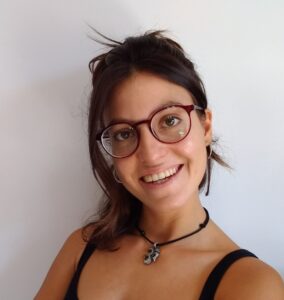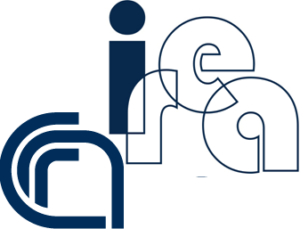Past AquaWatch Webinars

July 29, 2025 11:00 UTC
Braiding Knowledge Systems: Honoring Diverse Voices for Lake Resilience Watch the recording of this webinar here.
A panel of indigenous and non-indigenous speakers sharing their work and perspectives, convened in recognition of World Lakes Day (August 27th) and International Day of the World’s Indigenous Peoples (August 9th)
In celebration of the inaugural World Lakes Day, this virtual webinar will bring together diverse voices to highlight the urgent need to protect and restore lakes around the world. Featuring insights from Indigenous knowledge holders and scientific experts, the webinar will explore how bridging traditional and local knowledge with western science approaches can enhance efforts to sustain healthy and resilient lake ecosystems. Organized by members of the MAGIK Network (Melding AquaWatch Global Indigenous Knowledge) part of 6 organizations promoting water quality and earth observations, the event will provide a meaningful space for sharing perspectives, inspiring collective action, and honoring the profound cultural and ecological significance of lakes globally. Watch the recording of this webinar here.

Moderator: Dr. Jerome Marty, Executive Director of the International Association of Great Lakes Research, Canada
Speakers:

Leigh McGaughey leads the Great River Rapport, an ecosystem health report on the Kaniatarowanenneh (St. Lawrence River). The project, co-founded with the Mohawk Council of Akwesasne, is framed in the Ohenton Karihwatehkwen (Words That Come Before All Else), and brings diverse knowledge systems together. Working closely with Indigenous and local communities, the project demonstrates that community-driven science can result in new scientific discoveries and make meaningful contributions to conservation efforts in a region that has suffered from environmental justice issues. Leigh is trained as an ecologist whose past work experience includes research postings across 5 continents in a variety of settings, including academic, governmental, multinational, and non-profit organisations, and whose current work is rooted in Eastern Ontario.

Elisabeth Wambrauw is an Associate Professor in the Department of Urban and Regional Planning at the Universitas Cenderawasih in Jayapura, Indonesia. She is also the Vice President of New Zealand alumni in Indonesia (Internmenintent), the Regional Coordinator of the Association for Planning School Indonesia for Papua and Maluku Regional, and also the Papua Provincial Coordinator for Disaster Risk Reduction in University Forum. Her research focuses on sustainable development and traditional ecological knowledge related to water and infrastructure as well as climate change. We’re delighted to welcome her back this year to update us her work on sedimentation in Sentani Lake in Indonesia.

Julia Obuya is a PhD student at Bowling Green State University, USA and a research associate at Kenya Marine and Fisheries Research Institute(KMFRI). Her doctoral research focuses on cyanobacterial harmful algal blooms and their microbial associates in freshwater systems in Lake Erie and Lake Victoria. She investigates how ecosystem disturbances like eutrophication impact freshwater ecosystems and the well-being of local communities. Julia also volunteers with the Kenya Lakes Debris Volunteer Program, supporting beach cleanups and raising awareness about plastic pollution in the riparian counties of Lake Victoria, Kenya. Her work bridges science, policy, and community engagement, aiming to create resilient aquatic systems through transboundary and international collaboration.
Agenda
| Time (UTC) | Title | Name | Affiliation |
| 11:00 | Welcoming remarks and Introduction to the topic: [insert topic | Moderator Jerome Marty | IAGLR |
| 11:05-15 | Indigenous Opening & acknowledgement | Elisabeth Veronika Wambrauw | Associate Professor, Department of Urban and Regional Planning at the Universitas Cenderawasih, Indonesia |
| 11:15-20 | Welcoming remarks by Indonesia representative | Danny Rahdiansyah | Deputy Permanent Representative for UNEP and UNHabitat / Embassy of the Republic of Indonesia in Nairobi |
| 11:20-35 | Sedimentation of Sentani Lake | Elisabeth Veronika Wambrauw | Department of Urban and Regional Planning at the Universitas Cenderawasih, Indonesia |
| 11:35-50 | Honoring freshwater: A case study of the Kaniatarowanenneh | Leigh McGaughey | Great River Rapport |
| 11:50-05 | Harmful Algal Blooms in Lake Victoria – African Great Lakes: Two-eyed framework for understanding its impacts | Julia Obuya | Bowling Green State University (Ohio USA) |
| 12:05 | Q&A | Moderator | |
| 12:30 | Closing remarks & Final Thoughts | Moderator |
Assessing southern-Brazil extreme rainfall effects on sediment transport and Water Quality on the world’s largest chocked lagoon
February 25, 2025, 14:00 UTC
by Sergio Mauricio Molano Cárdenas, Universidade Federal do Rio Grande do SuL
Abstract: Most rainfall water in Southern Brazil passes through two large bodies before reaching the ocean: the Guaíba River and the Patos Lagoon. The Guaíba River has 5 catchment points that supply fresh water to the Porto Alegre metropolitan area (more than 4 million people). The Patos Lagoon provides ecosystem services such as cropland irrigation water supply, navigation, and fishery. In September/2023 and May/2024, the region was ravaged by extreme rainfalls, which led to flash floods, destructing urban areas, landslides, riverbanks, and intensifying fluvial erosion, affecting more than 2.4 million people. These extreme rainfall events might have significantly influenced sediment and nutrient transport, which can deteriorate water quality and lead to environmental degradation. This project used remote-sensing-related techniques and hydrological data to assess the impact of these events on sediment transport and water quality (Turbidity, Suspended Particulate Matter, and Chlorophyll-a concentrations) in the Guaíba River and Patos Lagoon. This research provided insights into the impact of extreme weather events on large coastal water bodies, highlighting the need for climate change adaptation and mitigation not only in land but also in water.
Speaker Bio: Sergio Cárdenas is a geoscience PhD candidate from the Federal University of Rio Grande do Sul. He researches coastal and marine processes using remote sensing at the Center for Coastal and Oceanic Geology Studies. He possesses expertise in geospatial data management, earth observation tools, and environmental geology. His current research focuses on sediment transport dynamics from sink to source in coastal environments, as well as the effects of human activities and climate change on these processes.
Machine Learning for Remote Sensing-based Water Quality Monitoring: Lake Victoria
January 14, 2025 14:00 UTC
Wanjohi Christopher, DataLyteGreen
Wetland Remote Sensing: Methodological review and recommendations for Chilika, India
December 3, 2024 16:30 UTC
B Goutami, XIM University, Odisha India
ABSTRACT: Chilika, the largest brackish water lagoon in Asia, has been designated as a wetland of international significance by the Ramsar Convention in 1981. Chilika is known for its ecological diversity, including Irrawaddy dolphins and migratory birds, as well as its impact on climate change adaptation. However, it is now facing several environmental issues, such as sediment load, deterioration of water quality, aquatic vegetation dynamics, and land use and land cover shifts. Conventional approaches of field sampling are restricted by substantial cost, time constraints, predictive accuracy, and the inability to monitor spatiotemporal variation of a large dynamic wetland like Chilika. The objective of this study is to comprehensively analyze the remote sensing (RS) techniques employed in Chilika, identify the strengths and limitations of existing research methodologies, and emphasize the prospective areas for future research. The study highlights that the primary satellites used in the study region are Landsat, AVIRIS-NG, and IRS. Studies explored mainly water quality parameters, biological diversity, and physical parameters, interpreting the seasonal and interannual fluctuation in the environment. Despite the initial setup expenses, researchers recognize remote sensing as a cost-effective method for conducting comprehensive and long-term environmental studies of wetlands. Although advancements in RS applications within Chilika are evident, there is an ongoing need to refine accuracy and extend research into areas such as the lagoon’s blue carbon capacity, dynamic land use and land cover patterns, spatiotemporal variations, and the implications of climate change. This chapter emphasizes the critical role of RS in advancing our comprehension and conservation efforts for unique ecosystems like Chilika. Keywords: Chilika, Remote sensing, AVIRIS-NG, Water quality
BIO: B Goutami is PhD scholar from the School of Sustainability, XIM University, India. She holds a B.Sc. in Zoology and an M.Sc. in Marine Biology from Berhampur University, Odisha. Currently, she also serves as a visiting faculty for the school of sustainability and teaches subjects like “Introduction to Physical Environment,” “Energy and Environment,” “Natural Resource Management and Sustainability,” and “Environmental Instrumentation”. Her research interests include ocean color remote sensing, phytoplankton research, ocean productivity, ocean sustainability and climate change.
November 6, 2024 1300 UTC
As a follow up to our successful July 31st Indigenous Earth Observations of Water Quality webinar, and in response to popular audience demand, we presented a panel to discuss aspects of Indigenous Data Sovereignty, especially in the water sector. This MAGIK Network workshop is again sponsored by GEO AquaWatch, World Water Quality Alliance, CSIRO- AquaWatch Australia, International Association of Great Lakes Research, and the Group on Earth Observations Indigenous Alliance.
Moderator: Dr. Yolanda Lopez-Maldonado
Speakers:
Abe Francis is a deer clan from Akwesasne and the current Program Manager for the Mohawk Council of Akwesasne – Environment Program. Earning a BSc in Microbiology and MSc in Natural Resources from Cornell University, Abe is currently a Graduate Research Assistant at Clarkson University (USA). Abe’s research interests are at the intersection of environmental studies, Indigenous methodologies, community engagement, education, health, social services, law, and cultural foundations as a means for empowerment and healing within Indigenous communities. Abe’s current work as Program Manager is to address and promote community concerns regarding the environment and conservation from a culturally grounded place to ensure that future generations have access to clean land and water.
Sara Smith is an Epidemiologist at Six Nations Health Services where she is focused on building data sovereignty for Six Nations health data and on applying an Indigenous approach to epidemiology. She is Mohawk, Bear Clan from the First Nations community. Six Nations of the Grand River, Ontario. She completed her Master of Public Health at McMaster University undertaking research to study the effectiveness of tobacco control policies. She conducted epidemiological analyses of tobacco use data from the Canadian Alliance for Healthy Hearts and Minds Study (CAHHM). Throughout the completion of her Master of Public Health Program she provided support to Ohneganos, an Indigenous water research program led by Dawn Martin Hill.
VIDEO CHATLOG Q&A
A View Into the SABIA-Mar Mission
Carolina Tauro, Comisión Nacional de Actividades Espaciales- Gerencia de Observación de la Tierra – Centro Espacial Teófilo Tabanera, Córdoba, Argentina (CONAE)
September 26, 2024
Abstract: SABIA-Mar stands for Satélite de Aplicaciones Basadas en la Información Ambiental del Mar, meaning Satellite of Applications Based on the Environmental Information of the Sea. It’s a satellite Mission being developed by Comisión Nacional de Actividades Espaciales (CONAE), the Argentine space agency, with launching date estimated for 2026. The Mission was created with the aim of contributing to Ocean Color measurements in South America seas and coastal zones as well as in global open ocean. Its main objective is to provide information and value-added products for studies related to primary productivity of the sea, ocean and coastal ecosystems, carbon cycle, marine habitats and biodiversity assessment, management of fishery resources and water quality of coastal waters and estuaries.
SABIA-Mar payloads include two main Ocean Color cameras operating at Visible, Near Infrared and Short Wave Infrared, covering the range of 400 to 1610 nm. In addition, it is included a High Sensitivity Camera (HSC) which will be able to detect night lights coming from jiggers fishing boats, giving valuable information for fishing management and sea surveillance. Finally, an ARGOS compatible Data Collection System (DCS) and an technological GNSS receiver (AGR-T) complete the satellite payloads.
SABIA-Mar Mission will generate and distribute scientific and value added products such as Normalized Water Leaving Radiance ([Lw]N ), Chlorophyll-a concentration ([Chl-a]), Fluorescence Line Height (FLH), Daily Mean Photosynthetically Available Radiation (PAR), Diffuse Attenuation Coefficient at 490 nm (Kd(490)) and Turbidity (T). Consequently it will contribute to the United Nations (UN) Sustainable Development Goals indicators and to the objectives raised in the Decade of Ocean Science for Sustainable Development, proclaimed by the UN for the years 2021-2030. More information about SABIA-Mar
Speaker Bio: Carolina B.Tauro has PhD in Physics at the Facultad de Matemática, Astronomía y Física of the University of Córdoba, Argentina (UNC). She is working on the Argentinian Space Agency CONAE (Comisión Nacional de Actividades Espaciales) since 2009, developing models and algorithms for the generation of scientific products derived from satellite information. At the beginning, she was part of Science Team of SAC-D/Aquarius Mission (CONAE-NASA), generating geo-physical products over the sea surface (wind speed, sea ice, among others). Currently, she is the Principal Investigator of the Ocean Color SABIA-Mar Mission at the Earth Observation Managment of CONAE. Also, she is professor at the “Instituto de Altos estudios Espaciales Mario Gulich” (CONAE-UNC). Carolina is the CONAE representative on the executive committee of the International Ocean Color Coordinating Group (IOCCG).
Contributions of Indigenous People’s EO to Water Quality Monitoring – panel presentation and interactive audience discussion
July 31, 2024 12:00 UTC
We invite you to this webinar in recognition of Indigenous People’s Day 2024 – co-sponsored by GEO AquaWatch, GEO Indigenous Alliance, CSIRO’s AquaWatch Australia, WWQA, and IAGLR. This informative 90 minute event will be moderated by James Rattling Leaf and will feature a presentation of our recent publication recommending best practices for inclusion of indigenous science, followed by Water Quality Use Cases presented by global indigenous scientists and an audience participation discussion. Find out more about the speakers and the agenda here:
VIDEO LINK Q&A (coming soon!)

June 26th, 2024 19:00 UTC (In conjunction with NOAA’s Ocean Color Coordinating Group)
Mortimer Werther, EAWAG
Navigating the unknown: enhancing aquatic remote sensing products through uncertainty
Abstract: Uncertainty is a fundamental aspect of aquatic remote sensing, generated by sources such as sensor noise, atmospheric conditions, and human error. Despite scientific advancements, these uncertainties are often neglected in remote sensing studies, leading to misinterpretations and missed opportunities for innovation. This seminar recaps key findings from our recent paper, “Dive Into the Unknown: Embracing Uncertainty to Advance Aquatic Remote Sensing,” and explores the sources of uncertainty in aquatic remote sensing, their theoretical background, and practical applications. We will provide examples in validation, model improvement, and decision-making. By embracing uncertainty, we aim to enhance the accuracy and reliability of remote sensing products, drive scientific progress, and support informed decision-making. Join us to discover why integrating uncertainty should be central to aquatic remote sensing efforts, leading to scientific advancement and more reliable Earth observation products.
Short Bio: Dr. Mortimer Werther holds a BSc in Geography from Kiel University, Germany, an MSc in Geo Information Science from Wageningen University, The Netherlands, and a PhD in Remote Sensing from the University of Stirling, Scotland (2022). He has worked at Brockmann Consult in Germany and has been a Postdoctoral researcher in Daniel Odermatt’s group at the Swiss Federal Institute of Aquatic Science and Technology (EAWAG) since September 2022. His research focuses on aquatic optics, remote sensing, and calibration/validation activities. Dr. Werther specializes in applying remote sensing technologies to aquatic ecosystems, with a particular emphasis on understanding and incorporating uncertainty into remote sensing models.
Water Talks: Advancing Diversity and Equity in Aquatic Remote Sensing
An Earth Observation based evaluation of activity-induced water quality variations in the Ganges
By Subhajit Bandopadhyay, Rashtriya Raksha University (India)
February 12, 2024 16:00 UTC
Abstract: Monitoring of water quality is a crucial responsibility for water supply and management entities, particularly in regions that are highly vulnerable to surface water contamination. The people of India dependent on the Ganges River in various parts of the nation are a relevant example of such regions, when considering their large population and limited control on pollutant emission. The Namami Gange Programme, a flagship initiative by the Indian government, aims to address pollution, conserve, and rejuvenate the river Ganges. River Ganges a critical water source for a large population vulnerable to contamination. To perform effective management, it is essential to map the sources of pollution and processes that impact water quality.
One water quality parameter that can be used as a tracer for pollution is the particulate matter concentration (C SPM ). As C SPM along the Ganges presents high spatio-temporal variability, we developed an automated remote estimation framework using Sentinel-2 time-series products and cloud computing capabilities. We use this framework to retrieve the spatio-temporal patterns of C SPM in pre, during, and post Covid-19 scenarios on three sites along the river. Our goals were both to evaluate different C SPM estimation algorithms for the Ganges and to describe the resulting C SPM spatio-temporal patterns and changes during the pandemic period. Four published estimation models and resulting C SPM were compared. Our results show convergent estimations of increase in C SPM in the Ganges in the post-pandemic period compared with the pre-pandemic period, with a complex pattern during the pandemic period, with trends depending on the region and algorithm. The tradeoffs of the different estimation algorithms and the significance of the results for management application are then discussed. Keywords: Water Quality, Ganges, Sentinel-2, Spatiotemporal modelling, India
Speaker biography: Dr. Subhajit Bandopadhyay is a remote sensing scientist in the field of optical and hyperspectral remote sensing for water quality, vegetation, and environmental management practices, particularly working on water and vegetation spectroscopy, water quality monitoring, disaster management, and algorithm development. His work has been focused on disentangling and analyzing optical and hyperspectral spectra to better understand water quality for efficient water management practices. He is currently exemplified as an Assistant Professor at the Rashtriya Raksha University (Indian Central University and an Institute of National Importance), India. Previously he tenured as a postdoctoral research fellow at the prestigious remote sensing lab at the University of Southampton, UK. Beyond his research and editorial pursuits, Dr. Bandopadhyay is renowned for his exceptional ability to cultivate and sustain fruitful collaborations with researchers and scientists globally.
A GEE toolkit for water quality monitoring from 2002 to 2022 in support of SDG 14 and coral health in marine protected areas in Belize
presented by Ileana Aracely Callejas, Biola University, USA
January 16, 2024 16:00 UTC
Abstract: The United Nations Sustainable Development Goal 14 (“Life Below Water”) addresses the need to conserve and sustainably use the ocean, seas, and marine ecosystems, including reef systems. Belize’s coral reef system is the second largest in the world, providing sources of income to Belizeans through tourism and fisheries as well as coastline protection. In order to conserve their marine ecosystems, Belize has a network of Marine Protected Areas (MPAs) throughout their coastal waters. Using Aqua MODIS satellite imagery from 2002 to 2022, Google Earth Engine, and RStudio, we present a workflow to calculate stress days on MPAs and a coral vulnerability index based on sea surface temperature (SST) and Kd (490), a proxy of water clarity. The coral vulnerability index was calculated by calculating the median z-score for all MPAs for each parameter and assigning ordinal values based on their distribution. The Corozal Bay, Swallow Caye, Port Honduras, and South Water Caye MPAs had the highest percentages of stress days and coral vulnerability stress index score based on these two parameters among the 24 MPAs analyzed. Additionally, SST in the warmest month of the year in Belize were seen to increase across all MPAs from 2002 to 2022 (p < 0.01). This GEE toolkit provides a straightforward and accessible tool to help governments monitor both water quality and risks to coral reefs in accordance with SDG 14.
Speaker Bio: Dr. Ileana Callejas is an Assistant Professor in Biological Sciences at Biola University in Southern California. She earned her Doctor of Philosophy in Environmental Engineering from UCLA, where she also obtained her Master of Science in Environmental and Water Resources Engineering and her Bachelor of Science in Environmental Science with a minor in Environmental Engineering. Her research focuses on studying the fate and transport of antibiotic resistance in rivers and beaches. Additionally, she uses satellite remote sensing for coastal water quality monitoring, particularly in Belize. In this capacity, she has collaborated with institutions such as the NASA Jet Propulsion Laboratory, Belize Coastal Zone Management Authority & Institute, and the Belize Wildlife Conservation Society. Callejas is committed to integrating authentic research experiences and evidence-based approaches into her classroom. In May 2024, she will partake in the NASA Postdoctoral Program at NASA Jet Propulsion Laboratory in Pasadena, Ca continuing her work in Belize. Ileana is a first-generation Latina, born and raised in Los Angeles, California.
Sensitivity Analysis of Machine Learning Models to Atmospheric Correction over Lake Amatitlán, Guatemala
by Daniela Rivera-Ruiz, Universidad de Concepción
November 29, 2023 – 17:00 UTC
Summary: This study evaluated the impact of atmospheric correction on machine learning models mapping cyanobacterial blooms extension using Lake Amatitlán, Guatemala as a case study. Through a supervised classification of distinct bloom formations, two methodological approaches were adopted for model development.: 1) a common threshold of cumulative explained variance was used to determine the number of principal components (PC) for dimensionality reduction across all datasets, and 2) the number of PCs for each dataset was tailored individually. The findings underscore the importance of exploring different atmospheric correction methodologies in enhancing machine learning techniques in the context of satellite-based inland water monitoring.
Abstract: This study evaluated the sensitivity of machine learning models to atmospheric correction over Lake Amatitlán, Guatemala, utilizing Sentinel 2 Multi-Spectral Instrument imagery acquired between 2019 and 2023. Supervised classification of false color images allowed us to construct datasets that distinguish areas based on the presence of chlorophyll-a, serving as a proxy for algal blooms. Pink-fuchsia-red colors, indicative of high chlorophyll-a levels, were categorized as Class 0, while dark blue and black tones over the water, signaling low or absent chlorophyll-a, were designated as Class 1. Utilizing approximately 10,000 georeferenced points from this dataset, we extracted spectral reflectances from top-of-atmosphere (TOA), bottom-of-atmosphere (Sen2Cor, DOS), and water leaving reflectance (C2RCC, C2X, C2XC, ACOLITE) across bands B1-B8A. We developed machine learning models using two distinct approaches with algorithms including Random Forest, XGBoost, Gradient Boosting, and Support Vector Classifier. The first approach used the TOA dataset as a baseline, where a threshold of cumulative explained variance (> 70%) determined the number of principal components (PCs) for dimensionality reduction across all datasets. Conversely, the second approach tailored the number of PCs to the same variance threshold, allowing for varying numbers of PCs across datasets. A sensitivity analysis, employing an unseen test dataset, was conducted to select the best-performing model in conjunction with the corresponding atmospheric correction processor. The analysis revealed that the DOS method achieved superior results (accuracy, precision, recall, and F1-score ~ 0.985) for land-based processors, while C2RCC delivered the best results (accuracy, precision, recall, and F1-score ~ 0.889) with the first approach for water-based processors. For the second approach, the adjustment of PCs was not applicable to land-based processors, which already met the > 70% variance threshold. Thus, we adjusted the PCs specifically for the water-based processors. This led to an improvement in C2RCC’s performance (accuracy, precision, recall, and F1-score ~ 0.919). This study demonstrates that robust machine learning models can effectively manage uncertainties associated with atmospheric correction over inland waters. The results highlight the necessity for a more comprehensive exploration of both land and water-based atmospheric correction methods suitable for machine learning techniques. Furthermore, the proposed methodology could serve as a viable alternative in scenarios where there is a scarcity of radiometric data for validating atmospheric correction processors in machine learning applications.
Speaker Bio: Daniela Rivera Ruiz is an Environmental and Civil Engineer, graduated from the University of Playa Ancha. She holds a Master’s degree in Agricultural Engineering with a specialization in Water Resources, and is a Doctoral Candidate (Dra.(C)) in Water Resources at the University of Concepción, Chile. Her doctoral thesis project is focused on developing a methodology to detect cyanobacterial blooms in Araucanian Lakes utilizing satellite imagery and machine learning techniques. Daniela has served as an academic at the Faculty of Science, University of Bío-Bío, where she instructed courses in Hydrology and Geographic Information Systems for Satellite Imagery to students pursuing degrees in Engineering in Natural Resources. She is also a research collaborator in the Water Research Center for Agriculture and Mining (CRHIAM). Currently, she is a Research Assistant at the Climate Change and Environmental Unit (UCCMA) within the Ibero-American Institute of Sustainable Development (IIDS) at the Autonomous University of Chile. She is actively engaged in two projects funded by the National Agency of Research and Development (ANID): Fondecyt/1231551 (2023-2026) titled “A theoretical-mathematical model to evaluate the integrity of freshwater ecosystems,” and ATE/220060 (2023-2025) titled “Climate change and multiple local stressors in freshwater ecosystems.”
State of the Science Water Quality Forecasting Part 3:
Monitoring Coastal Water Quality through Earth Observation: An Early Warning Tool
by Mar Roca Mora, INSTITUTO DE CIENCIAS MARINAS DE ANDALUCÍA (ICMAN-CSIC)
November 7, 2023 – 14:00 UTC
Bio: Mar Roca. Degree in Marine Sciences from the Catholic University of Valencia (UCV) in 2018, being awarded with the UCV Innovation Award for her BSc final project. MSc in GIS and Data Science by Esri, awarded with the Extraordinar prize for the best grades 2018-2019 and with attendance at the Esri User Conference (San Diego, California) defending her MSc final project, where she received the International Esri Young Scholar Award 2019. After the technical specialization, she completed the MSc in Integrated Coastal Zone Management (ICZM) in the University of Cádiz (UCA), developing her MSc final project on remote sensing Copernicus products and coastal management at the Institute of Marine Sciences of Andalusia (ICMAN-CSIC) thanks to the competitive contract JAE Intro 2020 of the Spanish Ministry, for which was awarded by the MSc Extraordinary Prize 2020-2021.
In parallel, she has worked on her own through projects associated with environmental consultancies and NGOs related to the coastal and marine environment and developing ad-hoc geospatial solutions, web mapping applications and cartographic products. Since Decemeber 2021, she has been working on her PhD thesis at the ICMAN-CSIC focused on optical coastal remote sensing, water quality monitoring and blue carbon accounting of marine organisms through image processing. Her thesis is entitled “Monitoring the Coastal Zone: new tools based on Aquatic Remote Sensing Techniques”, where she uses images from satellites to develop algorithms and generate useful solutions for coastal management. She worked at the German Aerospace Center (DLR) based in Berlin (Germany) as a Guest Researcher with Dr. Dimosthenis Traganos within the Global Seagrass Watch project, where she developed a geospatial monitoring tool for seagrass monitoring through Sentinel-2 imagery and Machine Learning algorithms within Google Earth Engine.
All the results obtained during her career have been presented at national and international conferences including Google (Mountain View, California), as well as transferred to Q1 peer-reviewed scientific publications. In addition, she has experience in field campaigns, diving (advance + nitrox), data processing and visualization, mapping, and reporting, having also completed 4 environmental and geospatial volunteers.
State of the Science Water Quality Forecasting Part 2: (see video link below)
October 26, 2023 – 13:00 UTC
NOAA’s HAB Forecasting
by Rick Stumpf, NOAA (read biography here)
Forecasting Water Quality from Space
by Ralf Quast, Brockmann Consult (read biography here)
Abstract: Water quality is routinely measured and monitored in situ and from space. Forecasting of water quality is of potential interest for mitigations of risks concerning public health and industy. However, EO water quality retrievals have not been used much for forecasting of water quality yet. The objective of the research project “Forecasting Water Quality from Space” funded by ESA’s permanently open call for proposals on “EO Science for Society” is to develop an EO data-driven methodology facilitating credible short term forecasting (up to several days) of coastal and inland water quality in terms of turbidity, concentration of chlorophyll-a, and occurrence of harmful algal blooms. The research has started very recently (September 2023). The outline of the project and its key ideas are presented with the aim to establish interaction with the wider scientific community.
Machine learning algorithms for short-term forecasting of phytoplankton dynamics
by Evangelos Romas (read biography here) and Apostolos Tzimas (read biography here), both of EMVIS
Water Talks: Advancing Diversity and Equity in Aquatic Remote Sensing
Remote sensing experiences in monitoring inland water quality indicators in central Argentina within the framework of the 2030 sustainable development goals: A hyperspectral approach
by Dra. Anabella Ferral, Instituto Gulich, Universidad Nacional de Córdoba & Comisión Nacional de Actividades Espaciales (CONAE); Consejo Nacional de Investigaciones Científicas y Técnicas de Argentina (CONICET)
October 25, 2023 – 13:00 UTC
Abstract: Global change, understood as a response to the sum of anthropic and natural pressures on ecosystems, modifies the stationary balance of our planet, impacting the life on Earth. Recently, the United Nations Statistical Commission proposed a series of quantitative indicators to measure the impact of public policies for each of the 17 Sustainable Development Goals (SDGs) to be achieved by 2030. In particular, SDG Goal 6 refers to the care of water resources and the provision of safe water and sanitation. Among the most relevant problems is the advanced eutrophication of water bodies. The excess of nutrients such as nitrogen and phosphorus that reach rivers, lakes and oceans acelerate this process, which is manifested by the excessive proliferation of some microscopic algae and harmful cyanobacteria. Eutrophication in numerous water bodies across Argentina has consistently led to significant fish mortality, as well as episodes of unpleasant odors and flavors in reservoirs designated for both, human consumption and recreational activities. Given this, citizens have requested urgent control, prevention and mitigation measures from the municipal, provincial and national authorities. Satellite information has been used for this purpose since 1972, based on biomass detection approaches leveraging chlorophyll a concentration as an indicator. In this webinar, we present multidimentional remote sensing approaches to characterize eutrophication processes in San Roque reservoir, central Argentina, in which spatial, temporal and spectral resolutions of satellite data are analyzed. Firstly, we show results related to [Chlorophyll-a] models built by means of Landsat 8-OLI, Sentinel 2-MSI and TERRA-MODIS imagery to characterize pollution sources, the effect of mitigation measures, spatio-temporal trends as well as seasonal and interannual patterns. For the three sensors we found better models for the band ratio NIR_860nm/RED, obtaining the best performace for Sentinel-2 with a R2 equal to 0.77 and a RMSE equal 34.07 mg/m3. We also present novel results related to absorbance, fluorescence and reflectance spectral measurements of cyanobacteria cultures such as Microcysitis sp, Dolichospermum, and Pseudoanabaena. In this context, we analize a hyperspectral PRISMA image acquired during a severe bloom event in San Roque reservoir and evaluate spectral similarity between laboratory and satellite spectral signatures with the Normalized Similarity Index. Finally, we present future perspectives in the frame of next generation hyperspectral satellite missions, such as PACE, and the future Argentine multispectral mission “SABIA-Mar,” to be launch in 2025.
Bio: Anabella Ferral has PhD in Chemistry and MSc. in Space Applications for Early Warning and Response to Emergencies from the National University of Córdoba (UNC) and the National Commission for Space Activities (CONAE), Argentina. She worked for the Secretary of Water Resources of Córdoba province in water resource monitoring and was the Head of the Master’s Degree in Spatial Information Applications at the Gulich Institute from 2015 to 2020. Currently she works at Gulich Institute as an Assistant Researcher of the National Council of Scientific and Technical Research of Argentina (CONICET) and as a Professor. Her research focuses on remote sensing of aquatic environmental quality indicators within the framework of the Sustainable Development Goals (SDGs), through the integration of information from Earth observations, numeric simulations, field campaigns, and laboratory measurements.. Since September 2023, she has served as Associate Editor of the Geoscience and Remote Sensing Magazine published by IEEE-GRSS.
Alp-Lakes (Alpine Lake Water Quality Forecasting): Towards the symbiosis of Hydrodynamic Models and Satellites
Albofazl Irani, EAWAG, Swiss Federal Institute of Aquatic Science & Technology, Surface Waters – Research and
Management, Duebendorf, Switzerland and the Department of Geography, University of Zurich, Zurich, Switzerland
Marina Amodori, Institute for Electromagnetic Sensing of the Environment (IREA), National Research Council of Italy (CNR),
Milan, Italy and the Department of Civil, Environmental and Mechanical Engineering, University of Trento, Trento, Italy
October 11, 2023, 12:00 UTC
Abstract: AlpLakes, a project in the ESA Regional Initiative for the Alpine Region, provides a new, integrated implementation of satellite Earth observation, hydrodynamic modeling, and in situ measurements. In this webinar, we demonstrate the structure and features of AlpLakes with an emphasis on integrating remote sensing transparency products into a 3D hydrodynamic model, and tracking of observed satellite TSM/Chl-a patterns with the developed tools. Hindcasting, real-time, and forecasting model functionalities are integrated with satellite imagery in an open access web-based platform (https://www.alplakes.eawag.ch/). This operational platform provides a common tool for scientists, decision makers and the broader public, and aims at improving the management of lakes in the Alpine region as well as the public perception of environmental processes in their immediate living space.
As examples of potential use-cases, investigation of an algal bloom event in Lake Geneva and a resuspension event in Lake Garda will be presented. The webinar will address the following topics:
– The urgency of integrating remote sensing and modeling (Marina, ~10 min)
– Overview remote sensing products and particle tracking (Abolfazl, ~10 min)
– Science use-cases (Abolfazl & Marina, ~15 min)
– Live demonstration of AlpLakes operational web platform (Marina, ~6 min)
Speaker Bios:
Abolfazl (Fazel) IRANI RAHAGHI is currently a postdoc in the Remote Sensing Group at Eawag and Remote Sensing Laboratory at University of Zurich, Switzerland. He received his PhD in Environmental Science and Engineering in 2018 from the École polytechnique fédérale de Lausanne (EPFL) followed by a postdoc at the same institute. His work at EPFL mainly focused on investigating spatiotemporal variability of air-water heat exchange and lake surface water temperature (LSWT) using spaceborne and airborne LSWT products and 3D hydrodynamic models. He then joined Eawag in 2020 as a postdoc, and has been involved in several research projects including optical closure of aquatic reflectance, Calibration/Validation of remote sensing reflectance and water quality products, as well as integration of satellite products, 3D hydrodynamic models, and particle tracking.
Marina AMADORI is currently a post-doc at CNR-IREA in Milan, Italy. She earned a PhD in Civil, Environmental and Mechanical Engineering at the University of Trento in 2020. During her doctoral studies she was involved in research projects and consultancy activities aimed at understanding transport processes and anthropogenic impacts in medium-sized lakes, mostly in the alpine area. Her research area is physical limnology, her tools are numerical models and remote sensing. At CNR-IREA she is currently working on the integration of satellite products, atmospheric and hydrodynamic modelling, and in-situ measurements in lakes. Since 2020 her activity has had a specific effort towards the development of new tools and paths of joint research for the different disciplines addressing water quality and climate change impacts on lakes and reservoirs.
Copernicus Evolution – Research for harmonised and Transitional-water Observation (CERTO) | Remote sensing products, indicators and prototype
September 26, 2023- 12:00 UTC
by Eirini Politi, Brockmann Consult
and consortium Steve Groom, Ben Calton, Emmanuel Nwokocha, Thomas Jackson, Victor Martinez Vicente, Elizabeth C. Atwood, Andrew Tyler, Evangelos Spyrakos, Dalin Jiang, Francois Steinmetz, Didier Ramon, Federico Falcini, Federica Braga, Vittorio Brando, Mariano Bresciani, Ana C. Brito, Giulia Sent, Mara Gomes, Vanda Brotas, Adriana M. Constantinescu, Adrian Stanica, Carole Lebreton, Kerstin Stelzer, Carsten Brockmann, Dawn Ashby, Federico Ienna, Kevin Ramirez, Beatrice Malnati, Stefka Domuzova, Antonia Matthies, Kim Hockley, Luz Rodríguez-Vargas.
Abstract: In this webinar, the H2020 CERTO project outputs will be presented and the CERTO prototype shall be demonstrated. The need for improved remote sensing techniques that complement in-situ campaigns for reliable and consistent monitoring of water quality (WQ) in different water body types is pivotal to addressing UN Sustainable Development Goals and complying with European surface water monitoring policies. Three European Copernicus services (Marine, Climate Change and Land) provide satellite-based WQ information in oceanic, shelf and lake waters. Although transitional waters are partly covered by the Copernicus Marine coastal service, there is currently no coherent approach across the three services nor consistent products across the water continuum. Harmonised, transferable, robust and reliable approaches have long been needed to map WQ water bodies from oceans to coasts, to inland waters. To address this gap, the H2020 CERTO project has produced harmonised WQ datasets suitable for integration in the Copernicus services and uptake by downstream users such as water resource managers.
Six transitional sites were selected to develop and demonstrate the CERTO methodology: i) Danube Delta and Razelm-Sinoe Lagoon System; ii) Venice Lagoon; iii) Tagus Estuary; iv) Plymouth Sound; v) Elbe Estuary and vi) Curonian Lagoon. An extensive in-situ dataset of bio-geo-optical and above-water radiometry measurements was collected in these sites in 2020-2022, first contributing to and then exploiting a global in-situ spectral database (LIMNADES). The radiometry measurements were used to evaluate the best performing atmospheric correction algorithm, while the impact of adjacency and bathymetry effects on the observations was investigated and novel mitigation techniques were developed. Next, optical water type (OWT) classifications were created and implemented using Sentinel 2 MSI and Sentinel 3 OLCI data across a range of optical environments. The in-situ data were then used to test the best-performing in-water WQ retrieval algorithms per water type and to attribute water types to optical-biogeochemical and environmental traits.
In parallel, responding to user requirements collected from interviews with 18 local and national stakeholders in six European countries, new or improved water quality indicators were developed based on the improved CERTO products to ensure compliance with specific monitoring requirements. These indicators use estimates of turbidity and chlorophyll-a concentrations and include region-specific mean values, anomalies, percentiles (e.g., chlorophyll-a 90th percentile) and trends, among others. The CERTO indicators range from those tailored to fulfil spatial planning and water resource management needs of industries and local authorities, to those that help to better understand ecosystem functioning and provide input to European surface water quality status reporting. Finally, aiming to provide an overview of lagoon systems and highlight hotspots of vulnerability to climate change and other anthropogenic pressures, the Social-Ecological System Vulnerability Index (SESVI) has been developed, integrating CERTO indicators and various other multidisciplinary data (in-situ, modelled, RS).
All CERTO products have been brought together in the open-access CERTO prototype that can be operated as Software-as-a-Service (SaaS) and used to generate an archive of Sentinel 2 and 3 WQ products in the six sites. The indicators and other CERTO by-products are now being considered for commercial or other exploitation.
Speaker Bio: Dr. Politi specializes in Aquatic Remote Sensing & GIS Applications with Brockmann Consult GMBH, where she has worked since 2020. She is especially involved in Water Systems Products, Indicator Development, Project Management, Sustainable Development, User Engagement, Product Visualisations, Dissemination & Promotion of earth observation. She earned her Bachelors Honors degree in Marine Science at University of Aegean, her MSC (DISTINCTION) in REMOTE SENSING, IMAGE PROCESSING AND APPLICATIONS, and Ph.D. degrees in REMOTE SENSING OF LAKE WATER QUALITY at University of Dundee. She was previously employed by Odermatt and Brockmann, GMBH in Switzerland and held several senior post-doctoral researcher positions at University of Dundee and University College Cork, MARINE AND RENEWABLE ENERGY CENTRE, ENVIRONMENTAL RESEARCH
INSTITUTE. She has also held various research positions at academic institutions and worked in private industry.
The GLORIA Dataset
by Nima Pahlevan, Daniela Gurlin, Moritz Lehmann, and Daniel Andrade Maciel
June 22, 2023 – 19:00 UTC
Abstract:
Satellite data are now central to assessments of aquatic biodiversity, climate change impacts, trophic states, and primary productivity of surface waters. Using satellite data for water quality applications can mean overcoming the challenges of atmospheric corrections and algorithms development/testing on the basis of a large amount of in situ data to account for the bio-geo-optical diversity of inland and coastal waters. The GLObal Reflectance community dataset for Imaging and optical sensing of Aquatic environments (GLORIA) is an international effort that includes 7,572 curated hyperspectral remote sensing reflectance (Rrs, sr-1) measurements, with co-located measurements of water quality attributes, addressing such data needs. Our work has led to a large, comprehensive, difficult-to-collect dataset of existing measurements contributed from the global bio-optical research community in a grass-roots, collaborative effort with the goal of enabling scientific and technological advancement towards operational regional and global remote sensing of water quality monitoring. The presented material provides an introduction to the need for GLORIA and its origin story, an overview of the dataset and methods, a description of its radiometric diversity and quality control, information on data access, and insights in its exploratory analysis using R and Python and is seeking to provide a firsthand resource for its use. More information including a link to the GLORIA dataset can be found in our Data Descriptor in Scientific Data and associated ‘Behind the Paper’ blog post in the Nature Portfolio Earth and Environment Community.
- Need for GLORIA and its origin story (Nima -10mins)
- Overview of the dataset and methods (Daniela-10mins)
- Radiometric diversity and QC (Moritz-10mins)
- Data access and exploratory analysis using R and Python (Daniel-10mins)
- Q&A
Speaker Bios:
Nima Pahlevan, Principal Scientist for the Freshwater Sensing Program, SSAI & NASA GSFC: Dr. Nima Pahlevan is the principal scientist for the Freshwater Sensing Program of Science Systems and Applications Inc. (SSAI) at NASA Goddard Space Flight Center (GSFC). His main area of research lies within the remote sensing of water resource domain focused on algorithm developments, calibration/validation, impacts of climate variability on water quality, harmful algal blooms (HABs), and relevant applied science practices (e.g., biodiversity, water quality issues induced by hurricanes, wildfires, land-use/landcover change, urban developments, agricultural practices, illegal mining). Pahlevan serves on PACE, Landsat, and Terra/Aqua/SNPP science teams, and contributes to the Surface Biology Geology (SBG) mission. In collaboration with a large network of national and international collaborators (300+), Dr. Pahlevan has contributed 45+ peer-reviewed publications and has been cited 4300+ (h-index: 29), according to Google Scholar.
Daniela Gurlin, Natural Resources Research Scientist: Daniela worked on different aspects of the development of a remote sensing program to measure lake water quality, in-lake vegetation, and riparian development for the Wisconsin Department of Natural Resources (WDNR). Her main tasks lied in the adaptation of previously developed image processing protocols for the creation of annual statewide water clarity products to new satellite sensors and the field spectroscopy of lakes and flowages across Wisconsin to support the development and application of bio-optical algorithms for the estimation of optically significant constituent concentrations. She relocated to Germany in 2020 and works from her home in Berlin where she provides technical assistance in remote sensing and data management including the work on the GLORIA database. She enjoys exploring new venues in her ever changing hometown.
Moritz Lehmann, Senior Oceanographer, Starboard Maritime Intelligence: Moritz works on lake water quality monitoring using satellites and hyperspectral in situ sensors. He moved with his family to Aotearoa New Zealand in 2014 from Canada where he has conducted several field campaigns to characterize the great bio-geo-optical diversity of New Zealand lakes. Moritz was a co-lead of a project to improve cyanobacteria bloom detection by satellite, and he is an international advisor for the Australian AquaWatch mission. Later this year, Moritz hopes to hear of funding success for Clear Shores, a proposal for a New Zealand space mission focussed on water quality. Moritz works from his home in Raglan where he practices horsemanship and longboard surfing.
Daniel Maciel, Environmental Engineer, Instrumentation Laboratory for Aquatic Ecosystems – LabISA-INPE: Daniel Maciel is an environmental engineer who loves the art, science, and technology of remote sensing. Daniel started to work specifically on water quality remote sensing at the Instrumentation Laboratory for Aquatic Ecosystems – (LabISA/INPE), evaluating remote sensing algorithms to retrieve suspended sediments in the complex ecosystems of the Amazon Floodplain lakes. During his doctoral research, he studied how remote sensing could be used to estimate water transparency on several scales (local-to-global). Daniel is currently engaged in projects centered on i) developing state-of-the-art water quality products for Brazilian Inland waters (MAPAQUALI) and ii) evaluating how water transparency and remote sensing could be used to better understand phytoplankton biodiversity in the Amazon Floodplains lakes (BONDS/SABERES). In addition, Daniel is also a fan, user, and teacher of the R programming language. He maintains an Instagram page dedicated to scientific knowledge sharing (@radar.geo) on remote sensing and programming languages. Since 2021, Daniel’s R courses have attracted over 1000 students in Brazil, further empowering the scientific community with valuable programming skills.
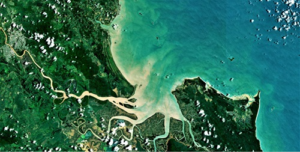 AquaWatch Australia
AquaWatch Australia
by Neil Sims, Acting Deputy Director of AquaWatch Australia, CSIRO
May 11, 2023 – 10:00 UTC (meeting link below)
Abstract: This seminar will be an introduction to the CSIRO AquaWatch Australia Mission just announced, which will deliver a world first ground-to-space water quality monitoring system for Australia and the globe. AquaWatch Australia already has six pilot sites set up within Australia and additional pilots established overseas to monitor water quality for drinking, sanitation, species conservation, hydroelectricity and carbon sequestration in mangrove forests. Dr. Sims will share some insights from early data collection efforts within Australia and abroad.
Once fully operational, the AquaWatch Australia system integrates Earth Observation with other science capabilities like in-situ sensing, ecosystem modelling, engineering, data science and artificial intelligence to provide near real-time updates and predictive forecasting – a weather service for water quality. Using an extensive network of Earth observation satellites and ground-based water sensors, it will support better water quality management, with early warning of harmful events such as toxic algal blooms, blackwater and runoff contamination. Working with a range of implementation partners, including researchers and industry, AquaWatch Australia will collect and process data from rivers to coasts, with the ability to monitor bays, coastal wetlands, aquaculture farming, mangrove forests and coral reefs.
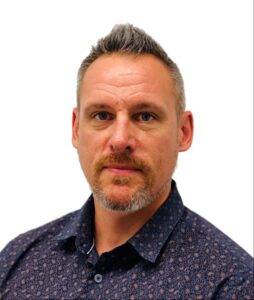 Speaker Bio: Neil Sims Ph.D. is a Research Manager at CSIRO Australia, with more than 25 years’ experience in the application of EO technologies to fields including ecosystem monitoring, forestry, land degradation assessment and water resources monitoring and modelling. He is a Program Manager of CSIRO’s Space Technology Future Science Platform, which funds more than 20 projects across the space domain to build innovation across the Australian space industry. He has worked extensively with CEOS and the UN Sustainable Development Goals, and has received two awards for Innovation and Individual Excellence from GEO. He co-Chairs the GEO Land Degradation Neutrality Flagship and recently co-led the review of the GEOSS Platform for GEO, and a new member of the GEO AquaWatch Steering Committee. As Acting Deputy Director of AquaWatch Australia, a CSIRO-led ‘Mission’ to map water quality from space across Australia and the world, he has established partnerships with international world leaders in the field of water quality monitoring, and helped define the national and global objectives for the Mission. In particular he is particularly interested in connecting Indigenous learnings to technology systems providing water quality information to a wide range of stakeholders.
Speaker Bio: Neil Sims Ph.D. is a Research Manager at CSIRO Australia, with more than 25 years’ experience in the application of EO technologies to fields including ecosystem monitoring, forestry, land degradation assessment and water resources monitoring and modelling. He is a Program Manager of CSIRO’s Space Technology Future Science Platform, which funds more than 20 projects across the space domain to build innovation across the Australian space industry. He has worked extensively with CEOS and the UN Sustainable Development Goals, and has received two awards for Innovation and Individual Excellence from GEO. He co-Chairs the GEO Land Degradation Neutrality Flagship and recently co-led the review of the GEOSS Platform for GEO, and a new member of the GEO AquaWatch Steering Committee. As Acting Deputy Director of AquaWatch Australia, a CSIRO-led ‘Mission’ to map water quality from space across Australia and the world, he has established partnerships with international world leaders in the field of water quality monitoring, and helped define the national and global objectives for the Mission. In particular he is particularly interested in connecting Indigenous learnings to technology systems providing water quality information to a wide range of stakeholders.
2023 UN Water Conference Official Side Event: Earth Observations in Support of Water Action
Date: March 20, 2023
Time: 10:00-11:30 EDT (14:00-15:30 UTC)
UN Environmental Program, in partnership with Deltares, Group on Earth Observations (GEO) Secretariat, Secretariat of the Convention on Wetlands, GEO AquaWatch, GEO BluePlanet, GEOHealth, EO4SDGs, Brockmann Consult, and GEOGloWS hosted this 90 minute virtual official side event for the UN Water Conference. The goal of this side event was to introduce Member States and interested parties to the utility of Earth Observations for water monitoring and identify cross-sectoral partnerships that can support the Water Action Agenda.
Please check out our resource page including presentations and the recording
BIOMONDO, BiCOME and BOOMS – Towards Earth Observation supported monitoring of freshwater and marine biodiversity
February 2, 2023 12:00 UTC – by Petra Phillipson, Brockmann Consult Sweden, and Victor Martinez-Vicente, Plymouth Marine Laboratory
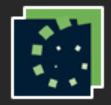
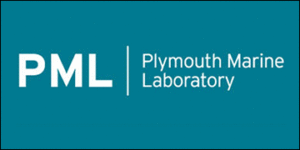
Abstract: The European Space Agency (ESA) activity “Biodiversity+ Precursors” is a contribution to the joint EC-ESA Earth System Science Initiative to advance ESS and its response to the global challenges. The Precursor BIOMONDO is focused on biodiversity in freshwater ecosystems, such as lakes, wetlands and rivers. BiCOME is focused on biodiversity in coastal ecosystems such as intertidal and subtidal seagrass as well as pelagic coastal environments, BOOMS is focused on biodiversity on open ocean waters. The objective of the Precursors is to identify knowledge gaps and challenges in biodiversity monitoring and to demonstrate and explore possibilities to support these challenges by combining EO based products, biodiversity modelling and in situ data.
Speaker Bios: Petra Philipson holds a PhD in aquatic remote sensing and has served as a remote sensing consultant since 2003. Dr. Philipson is co-founder, vice manager and consultant at Brockmann Geomatics since 2011, with personal interest and focus on aquatic national, European and global assignments and research and development projects. Petra is also the Project Manager for BIOMONDO.
Victor Martinez Vicente has a PhD in marine optics and is currently a senior scientist working at Plymouth Marine Laboratory since 2002, with a research focus on developing new algorithms from ocean colour remote sensing for scientific and societal applications in the marine environment such as marine debris and biodiversity. Victor is the Project Lead for BOOMS and BiCOME.
VIDEO GEO AquaWatch Webinar – Petra Phillipson and Victor Martinez-Vicente – Meeting Chat
The Real Earth Portal Demo funded by University of Wisconsin
January 26, 2023 16:00 UTC
Visualizing and Integrating Global Water Quality Observations with Embedded RealEarth Web Maps
Sam Batzli, University of Wisconsin – Madison, Space Science and Engineering Center
Abstract: Researchers at the Space Science and Engineering Center (SSEC) of the University of Wisconsin-Madison developed a web-mapping platform called “RealEarth” to improve the integration of geospatial and meteorological data sets in time-series. Developing a common browser-based interface and API with open standards has enabled juxtaposition of disparate datasets for discovery and situational awareness. Bringing near real-time satellite observations together with in situ measurements and contextual data has proven valuable in monitoring wildland fires, floods, severe weather events, and now water quality. A two-year internally funded project for “developing strategic partnerships and improving technical capacity” brought together Sam Batzli of SSEC and Steve Greb of GEOAquaWatch. Together they developed an open, web-accessible, RealEarth-based embedded set of map displays of satellite-derived water quality information. It includes in situ data sources with graphs and incorporates daily updates that have the potential to highlight trends that could draw attention to water quality issues. What makes this interface unique is the automated collection and display of difficult to find data, and the ability to compare and overlay data from disparate sources in a common interface. This webinar will provide a guided tour of these embedded maps and data sets.
Bio: Dr. Sam Batzli is a data engineer with training in historical and cultural geography. At the UW-Madison Space Science and Engineering Center (SSEC) he develops access to satellite observations of land, atmosphere, and ocean through GIS and internet mapping. He consults on data interoperability and visualization for colleagues through NOAA-, NSF-, and NASA-funded projects and a broad public user community through the AmericaView education and outreach program.
Links:
https://ssec.wisc.edu/realearth (general information about RealEarth)
https://realearth.ssec.wisc.edu (the primary RealEarth interface)
The AquaWatch Google Earth Engine Project funded by GEO
January 10, 2023 by Nate Merrill, Kelly M. Luis, and Benjamin Page
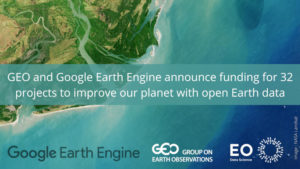
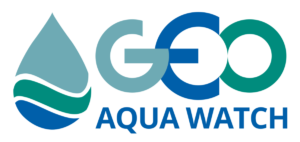
1- Implementation of aquatic based atmospheric correction for Landsat/OLI and Sentinel-2/MSI in Google Earth Engine by Ben Page, Earth Space Technology Services ESTS, Contractor to the USGS Earth Resources Observation and Science (EROS) center
Abstract: This segment introduces the applicability of an image processing methodology for Level-1 Landsat-8 (OLI) and Sentinel-2 (MSI) satellite image collection datasets within the Google Earth Engine (GEE) environment to estimate the water-leaving remote sensing reflectance (Rrs) for inland and near shore coastal surface water pixels. Current collections of Level-2 generated surface reflectance (SR) products for OLI and MSI are available in GEE but lack the water-leaving reflectance (ρw = Rrs * π) property often needed for semi-analytical and empirical bio-optical investigations that attempt to characterize the inherent optical properties (IOPs), water color, and water quality constituents just below the surface. Here, traditional ocean color image processing techniques are implemented into the GEE JavaScript API alongside corresponding scene-based auxiliary climatological information already ingested into the GEE repository to assist in retrieving realistic Rrs across geographically diverse targets. The advantage of leveraging the GEE cloud computing infrastructure allows for vigorous testing of the performance of MSI and OLI Rrs algorithm development across global regions and scales well with immediate seamless integration into lake and coastal management practices. This is a GEOAquaWatch first attempt at fulfilling the need for a user friendly and accessible application to extend ground based measurements so that regional water quality methods, trends, and assessments may be carried out in a fast, routine manner.
2- What would an environmental economist use it for? by Nate Merrill, US Environmental Protection Agency, Office of Research and Development
Abstract: This presentation will cover the motivation for using Google Earth Engine (GEE) for aquatic remote sensing work. This will be followed by an update of the progress made to date by this GEOAquaWatch/GEE project to implement and translate water quality algorithms, specifically the TSS algorithm, SOLID. Lastly, I will give an overview of the GitHub repository for this and future work by the collaboration.
3-Investigations of Aquatic Applications in Google Earth Engine by Kelly M. Luis, NASA Jet Propulsion Laboratory, California Institute of Technology
Abstract: The need for global-scale, open access, fit-for-purpose coastal and inland water quality information is shared by scientists, decision-makers, industry professionals, and the general public. GEOAquawatch’s Google Earth Engine (GEE) working group set out to explore the ability for Google Earth Engine to fill this shared need. This webinar will share highlights from the group and host a community discussion on the current GEE needs of the GEOAquawatch community. Activity highlights include walking through open-source atmospheric correction methods in GEE and the derivation of water quality parameters with machine learning methods. We welcome participants from all backgrounds to engage in this webinar and future activities of the GEOAquawatch GEE group.
Speaker Bios: Ben Page is a remote sensing scientist at the US Geological Survey’s Earth Resources Observation and Science (EROS) center. He has earned a Master of Science in geography -remote sensing from the University of Georgia, and Bachelor of Science in cellular and molecular biology from University of Minnesota Duluth.
Nate Merrill is an environmental economist who studies the costs and benefits of improvements in coastal water quality to support the US Environmental Protection Agency’s cost-benefit analyses and state and local partner’s needs. Through surveys, emerging data resources, modeling and on-site observations, the cost and benefits of coastal water quality can be quantified, informing policymakers on the effects, in monetary terms, of protecting and improving natural resources in the coastal zone. Through collaboration with ecologists, oceanographers and remote sensing experts, he works to create and test new representations of human behavior and environmental quality at the scales that better match economic methods.
Kelly Luis is a NASA Postdoctoral Program Fellow at the Jet Propulsion Laboratory, California Institute of Technology. Her research focuses on the bio-optical validation of aquatic imaging spectroscopy and leveraging imaging spectroscopy datasets for water quality and biodiversity mapping.
Low cost and high-autonomy sensors and platforms for optical water quality monitoring – final results from the MONOCLE project
November 2 2022 at 13:00 UTC (note daylight savings may affect your local starting time)– by Stefan Simis, Plymouth Marine Laboratory
Abstract: The MONOCLE project has developed an affordable ecosystem of networked sensors and platforms to provide better integration of optical monitoring methods for water quality and atmospheric properties with satellite observation and citizen science. Methods range from low-cost/low-tech devices to the use of consumer drones, to fully automated reference systems for ships-of-opportunity and offshore platforms. These in situ observation solutions are supported through an open data ecosystem based on standardized data services. With the completion of the project, MONOCLE sensors, platforms and services have started entering the market for use by monitoring agencies and research organisations.
In this seminar, Prof Stefan Simis (project coordinator, Plymouth Marine Laboratory, UK) will present an overview of the sensors, systems and services developed and tested between the twelve consortium partners operating in Europe and Africa, highlighting sensor synergies and new insights from high-frequency observations. The seminar will conclude with a number of recommendations (for discussion) for follow-on research, and actions recommended for environment and space agencies to achieve sustainable observation networks in support of satellite calibration/validation and monitoring progress of the UN Sustainable Development Goals.
This project received funding from the European Union’s Horizon 2020 research and innovation programme under grant agreement No 776480.
Speaker Bio: Stefan Simis is a phytoplankton ecologist using bio-optics to study biogenous matter in coastal and inland waters. His scientific contributions include remote sensing algorithm development, in situ sensor development and automation (mainly reflectance and fluorescence systems), citizen science solutions and bio-optical modelling based on laboratory experiments and field campaigns. Stefan joined the Plymouth Marine Laboratory in 2014, focussing on operational water quality remote sensing in optically complex water, leading in projects like the Copernicus Land Monitoring Service (Lake Water Quality) and the European Space Agency Climate Change Initiatives (Lake Colour) and supervising student projects ranging from satellite algorithm development to in situ fluorometry. Stefan was the scientific coordinator of the recently concluded MONOCLE project.
VIDEO CHATLOG Email Presenter: stsi@pml.ac.uk
PrimeWater Series- Modelling
October 26, 2022 at 12pm UTC
Testing multi-spectral satellite data for the development of data-driven models of phytoplankton dynamics in surface waters by Kyriakos Kandris, EMVIS
Abstract:
The webinar investigates the suitability of multi-spectral satellite imagery as a source of phytoplankton-related data for the development of credible and accountable data- driven models. Data-driven models are routinely deployed for the modeling of phytoplankton dynamics. Nonetheless, such data-oriented efforts are often plagued by two issues, i.e., insufficient data and the lack of interpretability. On one hand, insufficient data result in overfitting, which produces poorly generalizable models that are unreliable under extrapolating conditions. On the other hand, the lack of interpretability hinders the contribution of such models in decision making, since acting upon model predictions relies heavily on understanding why models behave the way they do. As a result, two important questions arise regarding phytoplankton dynamics in lake and reservoir ecosystems: (a) can we develop trustworthy and accurate data-driven algorithms for the prediction and forecasting of phytoplankton dynamics, and (b) can we gain insight in the drivers of phytoplankton dynamics using data-oriented solutions? These two questions motivated the webinar which discusses the extent to which satellite-derived chlorophyll-a allows for the development of theory-guided, data- driven models of phytoplankton dynamics in inland waters.
Speaker Bio :
Dr. Kandris is a Research Associate at EMVIS for the PrimeWater Project. He delivers Advanced Predictive Tools from Medium to Seasonal Range for Water Dependent Industries Exploiting the Cross-Cutting Potential of Earth Observations and Hydro-Ecological Modelling. He holds Engineering degree in Geotechnical and Geoenvironmental engineering, M.S. in Water Resources Science and Technology, and Ph.D. in Bioremediation of chloroethene contaminated sites – all earned from the National Technical University of Athens, Greece.

 PrimeWater Series:
PrimeWater Series:
Imaging spectroscopy for aquatic ecosystems: research and applications with PRISMA by Claudia Giardino, CNR
September 14 2022 at 12pm UTC
Abstract: The webinar presents research efforts we developed in the last few years with PRISMA (PRecursore IperSpettrale della Missione Applicativa) to demonstrate the benefit of spaceborne imaging spectroscopy in aquatic applications. The presented activities, which also incorporate contributions from the scientific community, embrace the satellite mission description, the evaluation of PRISMA products for their specific use in water quality applications, hence covering the challenges of atmospheric corrections and algorithms development/testing. Examples of water quality mapping for several aquatic ecosystems distributed globally are then provided to support the use of current and future hyperspectral satellite missions, also in synergy with multi-spectral remote sensing. Links to a series of tools used in the experiment ‘Exploitation of satellite imaging spectrometry for mapping phytoplankton and aquatic vegetation’ developed in the EO Virtual Lab of the H2020 PrimeWater project, are provided during the presentation.
Speaker Bio: Claudia Giardino is research director at the National Research Council of Italy, Institute for Electromagnetic Sensing of the Environment (CNR-IREA). She has a degree in environmental engineering and PhD in remote sensing sciences, both received from Politecnico di Milano (Italy). Since about 25 years she performing R&D activities in inland and coastal water quality remote sensing with interest on retrieval of bio-physical parameters from EO, cal/val, hyperspectral remote sensing and more recently on using EO to assess climate change effects on lakes. She is member of the IOCCG Committee. She regularly supervises Ms.Sci. and PhD students, mostly from University of Milano Bicocca and Politecnico di Milano, while she is providing tutoring for students of international internship.
Calculated risk: Leveraging multi-mission compositing and machine learning for managing cyanoHABs
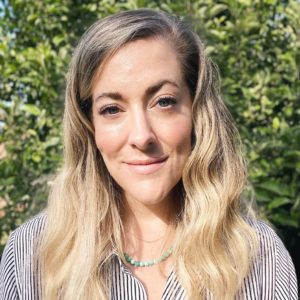
April 28th, 2022, 2pm UTC (see meeting login details below)
Presenter: Dr. Kate Fickas, USGS/UCSB
Abstract:Monitoring cyanoHABs in lakes and reservoirs with remote sensing requires robust processing techniques for generating accurate and consistent products across local and global scales at high revisit rates. In this research, we leverage the high spatial and temporal resolution chlorophyll-a (Chla) and phycocyanin (PC) maps from two multispectral satellite sensors, the Sentinel-2 MultiSpectral Instrument (MSI) and the Sentinel-3 Ocean Land Colour Instrument (OLCI) respectively, to study bloom dynamics and risk management outcomes in Utah Lake, USA using both single-mission and multimission-composite datasets. We use established machine-learning-based mixture density networks (MDNs) to map Chla from MSI and train new MDNs for PC retrieval from OLCI, using the same architecture and training dataset previously proven for PC retrieval from hyperspectral imagery. An extensive set of PC field data matchups from Green Bay demonstrate the reduced sensitivity of the MDNs to uncertainties in the remote sensing reflectance that would otherwise be caused by instrument noise and atmospheric correction. The applicability of the MDNs to Utah Lake, despite Utah Lake being outside of the training dataset, is confirmed by comparing PC retrievals from Sentinel-3 to in situ cyanobacteria cell density. Our risk management assessments also show increased spatiotemporal coherence of bloom magnitude, frequency, occurrence, and extent of MDN-based maps compared to other satellite-derived cyanobacteria biomass indicators, yielding potential for use as a cyanoHAB tracking tool to be used by public health and aquatic resource managers in both short- and long-term monitoring scenarios. This flexibility renders MDNs a suitable alternative for generating multimission products from future advancements in aquatic remote sensing such as Landsat Next’s new aquatic bands.
Speaker Bio: Dr. Kate Fickas is a USGS Mendenhall Postdoctoral Fellow at the USGS Earth Resources Observation and Science (EROS) Center and the University of California, Santa Barbara Climate Hazard Center where she uses dense Landsat time series and climate data to develop new Landsat science products and aid in water resource and land cover forecasting and management. Additionally, her passion lies in wetlands and water quality and she works with collaborators from state and federal agencies to explore novel uses of other satellite missions, such as Sentinel-2 and Sentinel-3, for water quality and water resource monitoring. Dr. Fickas received her B.S. from University of Oregon and her M.S. and Ph.D. degrees from Oregon State University with Dr. Warren Cohen in projects characterizing wetland ecohydrological dynamics with Landsat spectral temporal features. She spent time as a postdoctoral fellow at the University of Massachusetts, Amherst and the U.S. Environmental Protection Agency evaluating salt marsh wetland vulnerability to sea level rise with UAS and Landsat data fusion. For two years she also acted as the Utah Division of Water Quality’s Harmful Algal Bloom Program Coordinator, collaborating with local health departments and federal agencies in public health and water quality resource management. Dr. Fickas is also the founder and co-director of the outreach group Ladies of Landsat and works towards increasing diversity, equity, inclusion, justice, and accessibility in the field of earth observation.
CIWAWA – City Water Watch: Monitoring urban waters from space
November 4th, 2pm UTC
Presented by: Kerstin Stelzer, Jorrit Scholze, Carole Lebreton (BC), Werner Blohm (HU), Christian Moldaenke (bbe) all of Brockmann Consult GmbH
Abstract: Water bodies are important and intensively used environments in urban areas and in the urban hinterland. They are of great economic interest (e.g. ports), are used for leisure, sports and tourism, and serve to improve the urban climate. The monitoring and management of water bodies in urban areas is mainly in the responsibility of the municipals. These authorities currently make their assessments and decisions based on data collected through in-situ measurements and, in some cases, modeling. New techniques that increase the knowledge about the water bodies and that help to optimize the monitoring programmes is of great interest and were the motivation for the CIWAWA project. Within CIWAWA we combine the techniques from field measurements and remote sensing to optimize the monitoring of urban waters. Installed permanent measuring stations in the city area of Hamburg, Germany and recently developed measurement techniques show the potential of a combined monitoring concept with remote sensing data. Using remote sensing data in urban areas for water quality monitoring, a few special characteristics need to be considered, e.g. objects on the water surface. To integrate the developed products into public authorities, different interfaces are established to demonstrate the benefit and application of the data. During the webinar we will show some of the algorithm developments addressing urban water specialties, the combination of the different measurement techniques as well as different interfaces to users. CIWAWA wraps in November 2021.
Speaker Bio: Jorrit Scholze is a Remote Sensing Specialist at Brockmann Consult GmbH since 2020, where he mainly works on EO projects and services for inland waters, including the project CIWAWA-CityWaterWatch. Jorrit studied MSc Applied Geoinformatics at the University of Trier and gained comprehensive knowledge about remote sensing of different topics during internships in Australia and Germany, traineeships, and his master thesis “Spatiotemporal Improvement of Passive Microwave derived Land Surface Temperatures” in the Netherlands. At Brockmann Consult, Jorrit works on algorithm development, validation, automatization of processes as well as preparation and visualization of remote sensing derived information for users and customers.
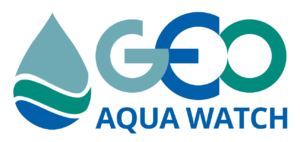
GEO AquaWatch New Project Showcase Webinar
This is the Kickoff of the 2021-22 GEO AquaWatch Webinar Series and the final installment of a 4 part Project-based Informational Series begun in March 2021. This particular webinar was an opportunity for the AquaWatch Community to hear five speakers showcase their brand new projects! Many thanks to all our early career hosts and moderators – we value your contributions to GEO AquaWatch!
September 9th – New Project Showcase Theme
Host: Megan Coffer, North Carolina State University post-doctoral researcher and USEPA ORISE Fellow- Working Group 4 C0-Chair; Moderator: Sumita Bhattacharyya, Ashoka Trust for Research in Ecology and the Environment (ATREE), India.
Speakers:
Anders Knudby, University of Ottawa, Canada Fully Automated Bathymetry, Co-authors: John Hedley, Numerical Optics Ltd.; Christopher Ilori, Simon Fraser University
Hubert Loisel, Laboratory of Oceanology and Geosciences (LOG) France, How Ocean Color Radiometry Can Help Us to Monitor the Global Coastal Waters? Results From the Past GlobCoast and Ongoing CO2Coast Projects, Co-authors: Vincent Vantrepotte, Daniel Jorge, and Cédric Jamet, LOG
James Acker, NASA Goddard Earth Sciences Data and Information Services Center, USA, Now is the Right Time for CORSAGE (Continuous Orbital Remote Sensing of Archipelagic Geochemical Events), Co-authors: Jude Wilber, Capella Consulting Group; Christopher W. Brown, NOAA/NESDIS/STAR; Albert Hine, University of South Florida College of Marine Science (emeritus); Christopher Sabine, University of Hawaii Manoa SOEST
Andrew Tyler & Peter Hunter, University of Stirling, Scotland’s International Environment Centre: The Forth-Environmental Resilience Array, Sam Barnett, Evangelos Spyrakos, Armando Marino, Carlos: University of Stirling; Simon Haston, Tim Marshfield Ashleigh Timmins; Patrick Cheffins: British Telecom
Lindsay Wancour, Adventure Scientists, USA, How process leads to action: Adventure Scientists’ inventory of Wild and Scenic Rivers
GEO AquaWatch Project Update Lightning Talks Webinar Series.
A 3 week series offering an opportunity to hear various speakers provide AquaWatch Community project updates in a series of lightning round talks! Many thanks to the Group on Earth Observations for hosting the videos on their YouTu.be Channel!
April 29, 2021 – Marine Coastal Theme
Host: Steven Greb, GEO AquaWatch Director; Moderators: Marie “Cindy” Lebrasse, ORISE fellow, USEPA, Ph.D. Candidate at North Carolina State University, Veloisa Mascarenhas, Research Fellow, University of Stirling, Scotland, UK, and Chris Lee, undergraduate student, Rochester Institute of Technology, USA.
Speakers:
Avi Putri Pertiwi, German Aerospace Center (DLR), Germany, Coastal turbid zone detection using Sentinel-2 imageries on Google Earth Engine cloud platform. Co-Authors: Dimosthenis Traganos and Chengfa Benjamin Lee, German Aerospace Center (DLR), Germany
Dimitry Van Der Zande, RBINS, Belgium, The New High-Resolution Coastal Service within CMEMS. Co-Authors: Kerstin Stelzer, Brockmann Consult; Martin Böttcher, Brockmann Consult; Carole Lebreton, Brockmann Consult; Joao Cardoso dos Santos, RBINS; Sindy Sterckx, VITO; Quinten Vanhellemont, RBINS; Kevin Ruddick, RBINS; and Carsten Brockmann, Brockmann Consult
Veronica Lance, NOAA, USA, NOAA CoastWatch/OceanWatch/PolarWatch makes the link from aquatic satellite data products to applications and information.
Jordi Sandalinas, Open University of Catalonia, Spain, Maritime earth observation and the EU Copernicus Regulation: legal and economic benefits, a preliminary study.
Steef Peters, Water Insight, Netherlands, Launch of a Commercial service Platform for User-relevant Coastal water monitoring services based on Earth Observation (CoastObs). Co-authors: Federica Braga, CNR. Vittorio E. Brando, CNR. Tony van der Hiele, HZ University of Applied Sciences. Annelies Hommersom, Water Insight. Pierre Gernez, University of Nantes. Laurent Barillé, University of Nantes. Laura Zoffoli, University of Nantes. Anne-Laure Barillé, Bio-Littoral. Nicolas Harin, Bio-Littoral. Luis González Vilas, University of Vigo. Jesus M. Torres Palenzuela, University of Vigo. Mariana Mata Lara, Geonardo. Andrew Tyler, Stirling University. Peter Hunter, Stirling University. Evangelos Spyrakos, Stirling University. Caitlin Riddick, Stirling University. Shenglei Wang, Stirling University. Dalin Jiang, Stirling University. Jasper van Houcke, HZ University of Applied Sciences. Lazaros Spaias, Water Insight
Els Knaeps, VITO, Belgium, Remote detection of plastic litter in a marine environment. Co-author: Mehrdad Moshtaghi, VITO
May 19 –Coastal Transitional/Estuaries Theme
Host: Blake Schaeffer, USEPA, GEO AquaWatch Management Team and WG 3 Co-Chair; Moderators: Dulcinea Avouris, Post-doctoral Scholar at the University of California, Merced; Dalin Jiang, Research Fellow, University of Stirling, UK; and Sumita Bhattacharyya, PhD Candidate, Ashoka Trust for Research in Ecology and the Environment, India.
Speakers:
Adriana Maria Constantinescu, National Institute of Marine Geology and Geoecology (GeoEcoMar), Romania, DANUBIUS-RI: International Centre for Advanced Studies on River-Sea Systems – Observation Node, link between EO and in-situ measurements. Co-authors: Andrew Tyler, Department of Biological and Environmental Sciences, University of Stirling, Stirling, United Kingdom; Steve Groom, Plymouth Marine Laboratory, Plymouth, United Kingdom; Adrian Stanica, GeoEcoMar & DANUBIUS-PP Consortium
Steve Groom, Plymouth Marine Laboratory, United Kingdom,CERTO Project Progress and the work of many co-authors too numerous to list
Thomas Jordan, Plymouth Marine Laboratory, United Kingdom, Automation and retrieval of remote-sensing reflectance observed from ships-of-opportunity: new directions from the MONOCLE project. Co-authors: Stefan Simis, Plymouth Marine Laboratory; Philipp Grötsch, Gybe; John Wood, Peak Design.
Xiaohui Zhu, Boston University, USA, A simple method to determine the apparent quantum yield matrix of CDOM photobleaching in natural waters. Co-authors: William L. Miller, University of Georgia; Cédric G. Fichot, Boston University.
Christiana Ade, University of California Merced, USA, Assessing Fish Habitat Potential and the Effects of an Emergency Barrier on Turbidity in a Drought Impacted Estuary Using Satellite Remote Sensing. Co-authors: Erin Hestir, University of California Merced and Christine M. Lee, NASA Jet Propulsion Laboratory.
Ana B. Ruescas, Brockmann Consult, Germany, SNAP Tools for Coastal and Inland Water Monitoring.Co-authors: Kerstin Stelzer, Marco Peters, Roland Doerffer, Jorrit Scholze, Carole Lebreton and Carsten Brockmann all of Brockmann Consult.
May 11th –Inland Waters Theme
Host: Andrew Tyler, University of Stirling, GEO AquaWatch Management Team and WG 5 Co-Chair; Moderators: Megan Coffer, Post-doctoral research fellow, U.S. EPA, North Carolina State University and Mortimer Werther, PhD Candidate, University of Stirling, UK
Speakers:
Daniel Odermatt, Eawag, Switzerland, In situ to in orbit: Optical properties of Swiss lakes. Co-authors: Abolfazl Irani Rahaghi (Eawag), Camille Minaudo (EPFL), Alfred Wüest (EPFL/Eawag)
Priyanka Jamwal, Centre for Environment and Development, Ashoka Trust for Research in Ecology and the Environment (ATREE), India, Data transparency: Moving from grab sample to real-time water quality monitoring. Co-authors: Veena Srinivasan, ATREE
Leif Olmanson, University of Minnesota, United States, Advanced Remote Sensing Methods for Automated Lake Water Quality Mapping. Co-author: David Porter, University of Minnesota
Petra Philipson, Brockmann Geomatics, Sweden, CyanoAlert – Space Based Cyanobacteria Information & Services. Co-authors: Carole Lebreton, Brockmann Consult; Kerstin Stelzer, Brockmann Consult; Eirini Politi, Brockmann Consult; Susanne Thulin, Brockmann Geomatics.
Peter Hunter, University of Stirling, United Kingdon, The UK Lakes Observatory: operational water quality products from Sentinel-2 MSI data. Co-authors: Andrew Tyler, Vagelis Spyrakos, Adam Varley, and Matthew Blake, University of Stirling; Claire Neil, Scottish Environment Protection Agency.
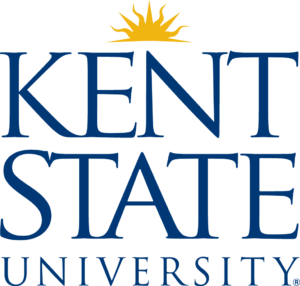
April 21, 2021 2pm UTC
Title: Spectral decomposition using Varimax-rotated, principal component analysis: Transitioning to the Google Earth Environment by Joseph Ortiz, Kent State University, OH
Speaker Bio: Dr. Ortiz earned the Bachelor of Science degree, with honors, from Brown University, Major: Aquatic Biology; and his Ph.D. in Oceanography from Oregon State University, Corvallis OR, Major: Marine Geology. “I believe that advances in scientific fields often occur at the interfaces between well established disciplines. Because of this, I have intentionally directed my research objectives toward interdisciplinary paths. For example, my expertise in aquatic biology allows me to study the response of marine microplankton to their environment to improve the quality of paleoclimate reconstructions. I use my expertise in core and wireline logging methods like diffuse spectral reflectance to quantify physical properties of deep-sea sediments and to determine provenance of archeological artifacts. Advances in one area often help me to fine tune or develop new approaches for use in other aspects of my research.My research background has provided me with a broad and powerful set of tools with which to attack problems using a multi-dimensional, interdisciplinary approach. My interest in a variety of research topics allows me to continuously refine existing skills while developing new ones. These skills and experiences enable me to conduct significant research on topics ranging from climate change to water quality. I have received funding for my research through the National Science Foundation, the Ocean Drilling Program, Ohio SeaGrant, NOAA, the KSU Farris Family Innovation Fund for Early Achievement, and the KSU University Research and Teaching Councils.” Find out more here. View Powerpoint Slide Deck here
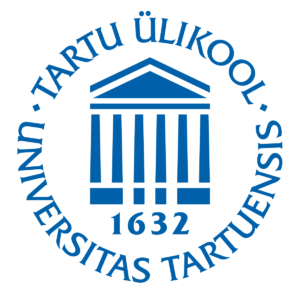
March 9, 2021 – 2pm UTC
Title: Developing a roadmap for future Copernicus water services by Tiit Kutser, Estonian Marine Institute, University of Tartu, Estonia
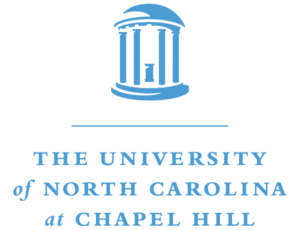
January 14, 2021 2pm UTC
Title: Towards Macroscale Application of Inland Water Remote Sensing by Simon Topp, University of North Carolina – Chapel Hill
Speaker Bio:
![]()
December 8, 2020 2pm UTC
Title: Introduction to GEO Citizen Science Overview and Community Discussion by Uta Wehn with commentary by Lea Shanley, Co-Directors of GEO Citizen Science
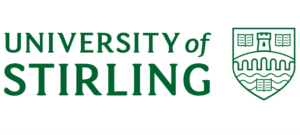
Title: LIMNADES Database Demonstration
Presenter: Adam Varley, University of Stirling, Scotland
Date: November 12, 2020 2pm UTC
Abstract – This will be a hands-on Demonstration of the Revamped LIMNADES Database. The LIMNADES (Lake Bio-optical Measurements and Matchup Date for Remote Sensing) data repository was a concept formed during the GloboLakes research project, which ended in 2018. The database is still maintained at the University of Stirling and poised to become a preferred data repository for inland water quality Calibration/Validation data. The purpose of the LIMNADES project is to provide a centralised database of ground bio-optical measurements of worldwide lakes through voluntary cooperation across the international scientific community.
LIMNADES is open to new ideas and developing data avenues, such as the collection of citizen science data, but it currently provides a repository for:
-
-
- Inherent and apparent optical property datasets and associated water constituent measurements;
- In-situ water constituent measurements for satellite validation.
-
Speaker Bio – Dr. Varley is the LIMNADES Database Manager. He has a general background in environmental sciences, with a first class undergraduate degree in environmental chemistry. During his thesis he was introduced to the field of environmental radioactivity that would unwittingly form the basis of my career. His subsequent PhD in environmental radioactivity changed my focus more towards the physical/computational sciences and remote detection of radioactive sources. The objective of his PhD was to develop methods to process gamma-ray spectrometry data to estimate the activity and buried depth of radioactive sources. The data processing element relied heavily on Machine Learning techniques. The developed method was used to characterise radioactive contamination at sites contaminated with 226Ra and 137Cs. His current research is dedicated to developing and implemented detection system for the Environmental Radioactivity Lab here at Stirling. This involves using gamma-ray spectrometry units on a number of platforms such as carbourne and handheld systems. Another research area is the use large volume detectors to estimate the risk posed by plough-induced soil erosion at archaeological sites. This work is a component of the larger European project called the CLIMA (Cultural Landscape risk Identification, Management and Assessment) project, which aims to protect ancient monuments and subsurface archaeological structures.

Title: Whatenvironmentalfactorsinfluencetheconcentrationoffecalindicatorbacteriain groundwater?InsightsfromUgandaandBangladesh
Date: October 29, 2020 2pm UTC:
Abstract:

Title: A Virtual Geostationary Ocean Color Sensor to Analyze the Coastal Optical Variability
Presenter: Marco Bracaglia , CNR
Date: September 17, 2020 2pm UTC
Abstract: in the coastal environment the optical properties can vary on temporal scales that are shorter than the near-polar orbiting satellite temporal resolution (~1 image per day), which does not allow capturing most of the coastal optical variability. The objective of this work is to fill the gap between the near-polar orbiting and geostationary sensor temporal resolutions, as the latter sensors provide multiple images of the same basin during the same day. To do that, a Level 3 hyper-temporal analysis-ready Ocean Color (OC) dataset, named Virtual Geostationary Ocean Color Sensor (VGOCS), has been created. This dataset contains the observations acquired over the North Adriatic Sea by the currently functioning near-polar orbiting sensors, allowing approaching the geostationary sensor temporal resolution. The problem in using data from different sensors is that they are characterized by different uncertainty sources that can introduce artifacts between different satellite images. Hence, the sensors have different spatial and spectral resolutions, their calibration procedures can have different accuracies, and their Level 2 data can be retrieved using different processing chains. Such differences were reduced here by adjusting the satellite data with a multi-linear regression algorithm that exploits the Fiducial Reference Measurements data stream of the AERONET-OC water-leaving radiance acquired at the Acqua Alta Oceanographic Tower, located in the Gulf of Venice. This work aims to prove the suitability of VGOCS in analyzing the coastal optical variability, presenting the improvement brought by the adjustment on the quality of the satellite data, the VGOCS spatial and temporal coverage, and the inter-sensor differences. Hence, the adjustment will strongly increase the agreement between the satellite and in situ data and between data from different near-polar orbiting OC imagers; moreover, the adjustment will make available data traditionally masked in the standard processing chains, increasing the VGOCS spatial and temporal coverage, fundamental to analyze the coastal optical variability. Finally, the fulfillment by VGOCS of the three conditions for a hyper-temporal dataset will be demonstrated in this work.
Biography: Dr. Marco Bracaglia graduated in Physics on 27/05/2016 at the University of Rome Tor Vergata. He attended a Ph.D. course in Environmental Phenomena and Risks at the Parthenope University of Naples and the CNR-ISMAR of Rome Tor Vergata. He completed the Ph.D. with the dissertation of its thesis “A Virtual Geostationary Ocean Colour Sensor to observe short term variations in particulate matter in the coastal environment” on 21/05/2020. He is currently a research fellow at the CNR-ISMAR in Rome Tor Vergata and technical manager of the Ocean Colour Thematic Assembly Center (OC-TAC) in the framework of the Copernicus Marine Environment Monitoring Service (CMEMS). His scientific interests are Ocean Color, remote sensing, bio-optical dynamics in optically complex waters, data processing, calibration and validation of Ocean Color satellite data.
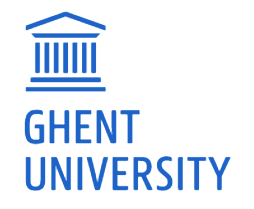
Title: Spectral enhancements with contra-bands: A case study of the OLI/Landsat 8 orange contra-band and its application for inland water remote sensing.
Presenter: Alexander Castagna, Department of Biology, Ghent University
Date: June 18, 2020, 2pm UTC
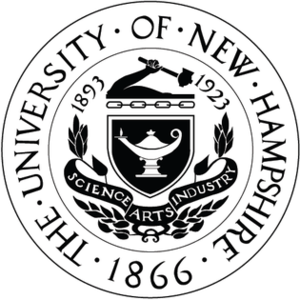
Presenter: Dr. Joe Salisbury, University of New Hampshire
Date: May 21, 2020, 2pm UTC
Abstract: GLIMR is hyperspectral radiometer that will be launched in geostationary orbit to study coastal ecosystems that are under pressure from population growth and changing climate. Our primary science centers on two questions: 1) How do physical processes that vary at timescales from hours to days impact the rates and fluxes of materials within and between aquatic coastal ecosystems? and 2) How do fluxes and rates within and between aquatic coastal ecosystems affect the formation, magnitude and trajectory of harmful algal blooms (HABS) and impact ecosystem and human health? To help address these questions, GLIMR will collect 141 bands of data in the visible to near infra-red (350-1020nm) with ~hourly coverage in our primary region of interest, the Gulf of Mexico. This high-density 4-dimensional data stream, (U, V, time, hyperspectral) will require creative new combinations of in-water data and advanced numerical methodologies in order to maximize the science value. We will present an overview of the science, instrument capabilities and data processing, as well as ideas on how advanced in-water assets and processing solutions could benefit the GLIMR mission.
Speaker Bio: Dr. Salisbury’s interests focus on the biogeochemistry and ecology of coastal regions, particularly those influenced by riverine processes. He is presently working on two strands of research. The first seeks to characterize distributions of carbon dioxide, air-sea carbon exchange, productivity and acid stress in freshwater-influenced coastal regions. The second strand involves the use of data from a variety of space-borne sensors to characterize net community productivity and carbon exchanges in coastal waters. For these projects his team uses a variety of remotely sensed data including ocean color, sea surface temperature and microwave radiometry. He is currently the principal investigator of a NASA satellite mission called the Geostationary Littoral Imaging and Monitoring Radiometer, scheduled to launch in 2026. This sensor will use ocean color to study coastal ecosystems. He is also co-PI of the NASA scoping study, Arctic-COLORS which seeks to implement a series of campaigns to the coastal Arctic to explore land to ocean interactions. Our UNH Coastal Carbon Group maintains several autonomous data collecting assets in the Gulf of Maine and is active in cruise campaigns throughout the western Atlantic.
Video Chatlog Publications (coming soon!)


Title: Arctic COLORS : Arctic-COastal Land Ocean inteRactionS
Presenters: Dr. Peter Hernes, University of California-Davis
Date: May 8, 2020, 2pm UTC/10am EDT (New York)
Abstract: Arctic-COLORS is a proposed NASA field campaign that is expected to start in 3-6 years and investigates the impact of changing terrestrial fluxes of materials on near-coastal ocean biogeochemistry in the study region from the Yukon River to the Mackenzie River. In preparation for Arctic-COLORS, NASA is funding preliminary projects to collect data to characterize the current state of the coastal Arctic that will be invaluable for measuring change when Arctic-COLORS comes online, and to test fundamental ideas about the transfer of riverine materials to the coastal zone that will help to shape the Arctic-COLORS science plan. This talk will primarily focus on one of those pre-Arctic-COLORS projects, in which we set out to 1) measure current conditions primarily in the Yukon River delta but also collected samples on the north slope of Alaska, 2) characterize the transformation of riverine materials from the head of tides through the delta and out to salinity, and 3) refine and develop algorithms for local Arctic water quality parameters and concentrations from remote sensing, with the ultimate goal of using those algorithms for hindcasting with existing remote sensing data. In addition to a multitude of optical measurements, our dataset also includes dissolved and particulate organic carbon, lignin, chlorophyll, salinity mixing experiments, microbial and photochemical oxidations experiments, and eventually high resolution mass spectrometry data. Understanding how river materials are transformed will allow Arctic-COLORS to take full advantage of long term datasets from programs like the Arctic Great Rivers Observatory.
Speaker Bio: Peter Hernes uses biomarkers (primarily lignin) in conjunction with several other bulk measurements to characterize sources, processes, and fates of organic matter in rivers out to the coastal ocean. In particular, he is interested in how river chemistry maps back to land use, landscape sources and processes, and constant change. He received his masters and PhD in chemical oceanography at the University of Washington in Seattle and did postdoctoral work at the University of South Carolina in Columbia before landing at the University of California – Davis is 2002, where he is a Professor of Hydrology and Aqueous Geochemist.
Video (Webinar Starts at 23mins 30 secs into the recording) Chatlog

Title: Airborne drone-based monitoring of the water quality
Presenters: Dr. Liesbeth De Keukelaere and Mr. Robrecht Moelans, VITO
Date: March 26, 2020, 2pm UTC
Abstract: Recent advances in Remotely Piloted Aircraft Systems (RPAS), or airborne drones, have created an additional monitoring platform that provides an opportunity to capture spatial, spectral and temporal information that could benefit a wide range of applications. This with a relative small investment, especially compared to the cost of manned airborne systems or satellite missions. However, the conversion of the raw data into physically meaningful values, like water-leaving reflectance, turbidity or chlorophyll concentrations is not so straightforward. This presentation will show the challenges faced when using airborne drone data over water surfaces through experiences from different field campaigns, organized in the framework of the MONOCLE H2020 research and innovation project.
Speaker Bios – Dr. De Keukelaere: A young researcher with a Master degree in Bio-Science Engineering, Liesbeth De Keukelaere’s focus is on soil, water and Earth Observation. During her first year after graduation, Liesbeth worked on spectral unmixing techniques to distinguish different tree species within one pixel. She then shifted her attention to water applications, investigating remote sensing’s potential for water quality monitoring in inland, coastal and transitional waters. In the summer of 2016 she was selected to participate with the IOCCG Summer Lecture Series: Frontiers in Ocean Optics and Ocean Colour Science, and in autumn 2016 she followed an introductory course on Aquaculture at Odisee Hogeschool (Belgium). During her career she’s been involved in multiple projects including two FP7 projects – INFORM (Improved monitoring and forecasting of ecological status of European Inland waters by combining Future earth ObseRvation data and Models) and HIGHROC (High Spatial and Temporal Resolution Ocean Colour coastal water products and services) – Belspo funded projects including REMEDY (Remote Monitoring of tropical Ecosystem Dynamics) and DRONESED (Dronese-based Sediment Mapping for Dredging Operations) as well as the ESA PV-LAC project (Advanced Land, Aerosol and Coastal products for Proba-V).
Mr. Robrecht Moelans: Robrecht is working with VITO as R&D Professional in processing drone and satellite images for water & coastal applications. Before VITO, Robrecht worked as R&D Project Manager with G-tec in Liège, Belgium and as Operational Superintendent (expat) with dredging company Jan De Nul. He is holding a Master’s degree in Mining and Geotechnical Engineering from Katholieke Universiteit Leuven.
Video Chat Transcript Nechad et al (2009) TSM methodology

Sarantuyaa coordinates the UNESCO-IHP’s International Initiative on Water Quality (IIWQ) and leads IHP activities on water quality and wastewater. She has developed several UNESCO projects on emerging issues and innovative approaches to water quality such as: satellite-based water quality monitoring; emerging pollutants; nature-based solutions to water quality; and climate change and water quality. She has developed the concept of the satellite-based UNESCO World Water Quality Portal to enhance open access water quality data at the global level.
Between 2007 and 2015, Sarantuyaa was responsible for UNESCO-IHP’s urban water activities, implemented IHP projects on integrated urban water management, and coordinated the publication of UNESCO Urban Water Series, comprising eight major books. Sarantuyaa has published numerous research and policy publications (books, research journal papers, technical reports, policy reports, etc.) and has contributed as lead author of chapters in UNESCO-EOLLS Encyclopedia and United Nations World Water Development Reports.
Video (webinar starts at 3 minute mark) and Chat

Title: National Ecological Observatory Network: Open data for ecological research and monitoring from across the US
Presenters: Battelle Ecology’s Bobby Hensley (Research Scientist, Aquatic Ecology) and Tristen Goulden (Lead Research Scientist, Remote Sensing)
Abstract: The National Science Foundation’s National Ecological Observatory Network (NEON) is an ecological observation facility, funded by US’s National Science Foundation. NEON collects and provides open data from 81 field sites across the United States that characterize and quantify how the nation’s ecosystems are changing. The observatory includes 81 field sites (47 terrestrial and 34 aquatic) located in different ecosystems across the United States (including Alaska, Hawaii and Puerto Rico). Data collection methods are standardized across sites and include automated instrument measurements, observational field sampling, and airborne remote sensing surveys. This webinar will provide an introduction to NEON and the over 175 data products with an emphasis on the aquatics and remote sensing data and infrastructure. More about the NEON program can be found at www.neonscience.org.
Presenter Bios:
Bobby Hensley, NEON Research Scientist – Aquatic Ecology
Bobby is an aquatic biogeochemist on the Aquatic Instruments science team. He has a background in using in-situ sensors to understand controls on stream metabolism and nutrient spiraling. He received his Ph.D. from the University of Florida.
Tristan Goulden, NEON Lead Research Scientist – Remote Sensing
Tristan is a remote sensing scientist with NEON specializing in LiDAR. He also co-lead NEON’s Remote Sensing Integrated Product Team which focusses on developing algorithms and associated documentation for all of NEON’s remote sensing data products. His past research focus has been on characterizing uncertainty in LiDAR observations/processing and propagating the uncertainty into downstream data products. His past experience in LiDAR has included all aspects of the LIDAR workflow including; mission planning, airborne operations, processing of raw data, and development of higher level data products.
Aquatic Ecology Slides (Coming Soon) Remote Sensing Slides. Chat Video (NOTE:webinar starts at 22 minute mark)


Title: The Online Cyanobacteria Warning and Information Service from Satellite Remote Sensing
Date: 4 April 2019, 14:00 UTC
This webinar was presented by Dr. Mark Matthews, founder and Director of CyanoLakes(Pty) Ltd, a commercial earth observation service provider. Dr. Matthews specialised in bio-optical remote sensing of cyanobacteria blooms and their detection from space. He graduated from the University of Cape Town in 2014 with a thesis entitled “distinguishing cyanobacteria from algae using bio-optical remote sensing”. He has published several papers in internationally recognised journals in the field, and is the author of the chapter on bio-optical modelling of chlorophyll-a in the textbook “Bio-optical modelling and remote sensing of inland waters”. Since graduating he has led several projects funded by the Water Research Commission in South Africa and the European Commission’s Horizon 2020 programme. He founded CyanoLakes (Pty) Ltd in 2015 after winning the Copernicus Masters Ideas Challenge for best business idea for earth observation data. As the director of CyanoLakes (Pty) Ltd he is passionate about bringing the benefits of earth observation innovations to governmental water and health authorities, utilities and industry around the world through CyanoLakes’s online public health information service offering.
*******************************
Abstract: At CyanoLakes we help water utilities and government agencies monitor toxin producing cyanobacteria blooms in their source waters, helping them use their limited resources more effectively and become more informed and responsive. During this talk we will discover how water utilities and government authorities can use CyanoLakes paid services to enhance and supplement their ongoing monitoring programs.
Recording: Video Q&A Chatfile
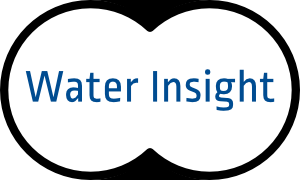
Recording: Video Q&A Chatfile
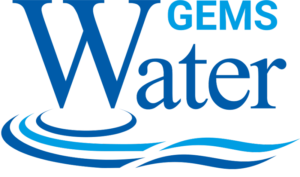
__________________________________________________
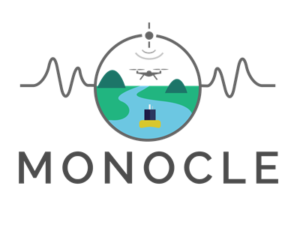
Special Horizon2020 Monocle/GEO AquaWatch co-hosted webinar!
Sustainability of Future Environmental Observation Networks
24 October 2018
For this seminar, invited speakers/panellists were MONOCLE Expert Advisory Board members Debbie Chapman (University College Cork and UN Environment GEMS/Water), Henrik Steen Andersen (European Environment Agency) and Steve Greb (GEO AquaWatch,University of Wisconsin-Madison) and MONOCLE contributors, Kathrin Poser (Water Insight,WP5 lead) and Oliver Clements (PML).
Abstract: The third MONOCLE webinar in the series addresses sustainability of environmental monitoring networks, in particular hybrid services of in situ and satellite observation networks. How do we safeguard long-term measurement series while sensor technology continues to improve? How should data collection be funded to be sustainable? How should a multi-scale observation network feed into regional and global reporting strategies?
An overview on current water quality monitoring policy and challenges will be presented, including discussion of how MONOCLE research may contribute to reaching the European and global monitoring goals.
Recording: Video

_______________________________________________________
2013-15 GEO Inland and Coastal Water Quality Working Group Webinar Series
Community-Based Water Monitoring and Watershed Stewardship – the Global Water Watch Experience
Date: 21 May 2015
This webinar was presented by Dr. Bill Deutsch, USA
Abstract:
Citizen volunteer water monitoring is one of the most popular and effective forms of citizen science, and there is a growing interest worldwide for community groups to collect scientifically valid data for the protection and restoration of their surface water and watersheds. Global Water Watch (GWW) began in the early 1990s in response to interests by community groups in several countries to become personally involved in water issues. This webinar will describe the origins and approaches of GWW in the US, Asia, Latin America and Africa and how these experiences led to the creation of a GWW model for community-based water monitoring and watershed stewardship. Case studies, data-to-action strategies, success stories and challenges will be presented.
Presenter bio:
Dr. Bill Deutsch is a Research Fellow, Emeritus in the School of Fisheries, Aquaculture and Aquatic Sciences at Auburn University (Alabama, USA). He has undergraduate degrees in Zoology and Anthropology, a Master’s degree in Biology and a Ph.D. in Aquatic Ecology and Fisheries. Bill directed the Alabama Water Watch and Global Water Watch programs for 20 years and continues his involvement with these programs, and two nonprofit organizations related to them, in his retirement. He has made about 100 international trips to more than a dozen countries for water-related projects, especially related to citizen science and community responses to watershed issues.
Webinar recording and presentation
Opening up a global water resources re-analysis dataset: the eartH2Observe tier-1 dataset and portal
19 March 2015
This webinar was presented by Jaap Schellekens, NL

Abstract:
Within four years the FP7 project eartH2Observe aims to develop a global water resources re-analysis dataset based on the WFDEI forcing dataset, improved with earth observations and extended with output from hydrological and land surface models that should be off value for multi-scale water resources assessments and research projects.
The Tier-1 dataset presented in the webinar consists of a large number of earth observation datasets, a first run of a total of nine global hydrological and land surface models for the period 1979 – 2012 and the WFDEI forcing dataset. All model output has been reprocessed to 0.5×0.5 degree resolution but higher resolution data from some models is also available. The current dataset serves as a state of the art in current global hydrological modelling and as benchmark for further improvements in the coming years.
Within eartH2Observe we promote the use of the newly available data at an early stage, feedback and comments will enable the further improvement of the dataset. All data is made available openly through a water cycle integrator portal, including visualisation, analysis and collaboration tools, and at a lower level via the protocols of the open geospatial consortium such as OPeNDAP, WCS and WMS via wci.earth2observe.eu. In the webinar the dataset will be presented and access to the data demonstrated using freely available tools. Download eartH2Observe leaflet here.
Presenter bio:
Since 2001 Dr. Jaap Schellekens has been working for Deltares where he is involved in projects and research related to hydrological modelling, watershed management and flood forecasting. Dr. Schellekens has extensive experience in (forest) hydrology, the hydrological implications of land-use and climate change, hydrological modelling (with special reference to flood forecasting) and hydrometeorological measurement techniques. In addition, Dr. Schellekens has lead a number of large projects related to (probabilistic) flood forecasting and has advised a number of leading meteorological agencies on the implementation of the Delft-FEWS flood forecasting system. Currently he coordinates the eartH2Observe FP7 EU project on global Earth Observation for Integrated Water Resource Assessment. His work has been published in leading scientific journals.
Webinar recording and presentation
Diversity-2 results
29 January 2015
This webinar was presented by Daniel Odermatt, CH

Abstract:
We report on the final Diversity II water quality product archive, covering more than 300 lakes worldwide, and providing validation for more than 50 lakes. The 2002-2012 MERIS full-resolution (FR) data used as primary input have recently undergone a first consistent re-calibration, referred to as bulk reprocessing, which corresponds to the 3rd reprocessing of MERIS reduced resolution data. Differences to the previously available MERIS FR archive are discussed in terms of matchup comparisons as well as final L3 products. A summary of several exemplary case studies carried out by product users is given, highlighting the potential of the datasets as indicators for biodiversity and other applications.
Bio:
Dr. Daniel Odermatt is an expert for spaceborne inland water quality retrieval and managing director of Odermatt & Brockmann GmbH in Zurich, Switzerland. He implemented the scientific design of the Diversity II water quality processing chain during a post-doctoral Marie Curie IAPP employment at Brockmann Consult GmbH in Geesthacht, Germany. Half a year ago he founded an independent joint venture with Carsten Brockmann to continue the successful collaboration in Diversity II and other projects. His ambitions are to contrast and structure the exorbitance of study-specific algorithms for optically complex waters developed in recent years, to advance suitable methods to operational applications, to improve the robustness of these applications and to foster their use in environmental monitoring programs and other surveys.
Webinar recording and presentation
Re-calibration of the MPH algorithm: towards a standard operational product for chl-a and cyanobacteria detection for inland/near-coastal waters
20 November 2014
This webinar was presented by Dr. Mark W. Matthews (Department of Oceanography, University of Cape Town, Rondebosch, 7701, Cape Town, South Africa)

Abstract: The talk provided an overview of the maximum peak height algorithm, providing some demonstration and details on new advancements related to the recently released plugin for BEAM (including adjacency effect detection). Results of the validation of the MPH algorithm across a wide range of water types performed in the ESA Diversity II project were presented (courtesy Dr. Daniel Odermatt). The talk discussed the re-calibration exercise for the MPH algorithm, in preparation for a publication. Initial results and approaches were presented from the re-calibration.
Bio: Dr. Mark Matthews is an earth observation scientist specialising in the detection of cyanobacteria from space. He graduated from the University of Cape Town in 2014, and has published 8 first author publications (two monographs) in high impact journals, and received several awards and scholarships. He received an innovation award in 2012 from the CSIR for operational monitoring of cyanobacteria and eutrophication in South African inland waters as well as a 2014 Copernicus Masters Ideas Challenge award. His maximum peak height algorithm has been developed as a plugin for the BEAM software. He has worked as a lecturer at the University of the Western Cape, and as a consultant for the CSIR and South African National Space Agency. He is currently a postdoctoral fellow at the University of Cape Town. He enjoys spending time with his wife and two kids, and fishing in his spare time.
Webinar recording (first 5 minutes are missing) and presentation
INFORM Project
25th September 2014
This webinar was presented by Ils Reusen and Els Knaeps (VITO)
Abstract
INFORM is a 4-year FP7-SPACE collaborative project (2014-2017) which aims to develop novel and improved user-driven products for inland water quality (WQ) monitoring by using innovative remote sensing methods coupled with biogeochemical models which fully exploits the improved spectral, spatial and temporal capabilities of upcoming Earth Observation (EO) missions (Sentinel-2, Sentinel-3, EnMAP and PRISMA).
Validated INFORM EO-model products will form a basis for future Copernicus products to assess e.g. the implementation of the EU Water Framework Directive (WFD). INFORM developments will lead to recommendations for future E0 missions taking into account requirements for inland water quality monitoring.
Webinar recording and presentation
Satellite Remote Sensing for Monitoring and Assessment
Date : 12th June 2014
Time: 2 pm UTC
Presenter: Blake Schaeffer (EPA)
Blake Schaeffer earned his PhD in Marine Science from North Carolina State University studying harmful algal bloom ecology. He then served in two post-doctorate positions. The first was a NASA funded project with the University of North Carolina at Wilmington to investigate the impacts of El Nino/La Nina cycles on ecosystem biodiversity in Galapagos, Ecuador.The second post-doctorate was with the U.S. Environmental Protection Agency quantifying optical properties related to the Gulf of Mexico hypoxic zone. He is currently an Assistant Laboratory Directory with the U.S. Environmental Protection Agency, National Exposure Research Laboratory. His research focus is on the use of remote sensing technology to monitor water quality. Interests broadly cover deriving water quality parameters in coasts, estuaries, and lakes using Landsat, SeaWiFS, MODIS, MERIS, VIIRS, HICO, and in the future Sentinel-3 and PACE. His interests generally include integrating remote sensing technologies into decision support frameworks. For example, he developed a satellite remote sensing approach for coastal numeric nutrient criteria. His new research effort focuses on detecting cyanobacteria blooms and disseminating the satellite information via a user friendly mobile device application.
Abstract
Remote sensing technology has the potential to enhance the engagement of communities and managers in the implementation and performance of best management practices. This presentation will use examples from U.S. numeric criteria development and state water quality monitoring programs to illustrate ways remote sensing can be used to advance management practices. In the first example, the U.S. Environmental Protection Agency determined that numeric criteria were necessary to protect Florida’s coastal waters from the impacts of anthropogenic nutrients. Florida’s coastal waters have not been monitored comprehensively via field sampling therefore existing monitoring data was insufficient to support numeric criteria development. However, satellite remote sensing had the potential to provide more extensive data. Spatial and temporal measures of chlorophyll-a derived from SeaWiFS, MODIS, and MERIS were resolved across Florida’s coastal waters and provided a quantitative baseline that could be used to protect against long-term changes in chlorophyll-a resulting from anthropogenic nutrients.
Success from the coastal criteria approach has focused new efforts on the validation of an “off-the-shelf” algorithm to identify cyanobacterial blooms, potentially for national application. In this study, available in situ cyanobacterial cell count data from Ohio, Florida, New Hampshire, Vermont, Rhode Island, Connecticut, and Massachusetts were compared with derived cyanobacterial cell count estimates from MERIS. A secondary goal of this project was to develop a stakeholder tool with the capability to monitor cyanobacteria blooms near real-time, and potentially provide predictive capability. Crowd sourcing was selected as a unique opportunity to pool the problem solving skills of >500,000 people worldwide to develop these capabilities. This combined use of satellite technology with crowd sourcing provided a sophisticated stakeholder tool that may allow for more holistic management to reduce exposure risk to the public.
Webinar recording and presentation
|
GLTC (Global Lake Temperature Collaboration) |
| 16 December 2013
This presentation was given by John Lenters, Senior Scientist with LimnoTech, in Ann Arbor, Michigan Abstract The Global Lake Temperature Collaboration (GLTC) began in the fall of 2010 to assemble an international group of investigators with interest in and access to global lake temperature records (both in situ and satellite-based). The GLTC group has since grown to over 50 investigators, and a workshop was held at the University of Nebraska-Lincoln in June of 2012 to bring together all international project participants in a common location to share data, examine patterns and trends, and compile a global lake temperature database. Additional lakes have been added to the database since the 2012 workshop, and the data have been undergoingdetailed statistical analysis. Results will soon be available to data providers and project investigators, with plans for publication shortly afterwards. Presentation
Webinar recording
|







